Contents
Medinet Habu | Introduction
Medinet Habu in EgyptLuxorOn the west bank is the site of an ancient Egyptian temple of great historical value. It is a complex of buildings with the Ramesseum III as its centerpiece, the main temple was built in the 12th century B.C. and is a masterpiece of the 20th Dynasty of the New Kingdom. The bas-reliefs and frescoes of the Medinet Habu are well-preserved and detail the heroism of Ramesseum III in his fight against foreign enemies and the important religious activities of his reign. It is well preserved and well worth a visit.
Ramses III is known as "the last great pharaoh of ancient Egypt" because his reign is considered the end of the prosperity of the New Kingdom period of ancient Egypt. During his reign, Egypt faced the invasion of the "Sea Peoples", a massive foreign invasion that affected the entire eastern Mediterranean. He successfully defended Egypt's borders from further threats and kept Egypt stable and prosperous for a short time. The pharaohs who came after him were no longer able to maintain the political and economic order of the country, and Ancient Egypt gradually entered a period of decline, losing the glory of its previous high degree of centralization. Therefore, Ramses III is often regarded as the last "great" pharaoh who was able to rule the country effectively.
It is recommended to allocate around two hours for a visit. From the stone gate to the colonnades, and into the temple halls and sanctuaries, visitors can fully experience the architectural and historical atmosphere of this temple. Due to the intricate details of the reliefs and murals, it is best to visit in the early morning or late afternoon when the sunlight is less intense, making it easier to observe the wall carvings clearly.
🧳 A full travel resource kit for this topic is currently in the works.
It will include itinerary plans, recommended stays, custom maps, and useful tips.
Medinet Habu | Transportation
Compared to Karnak Temple, Luxor Temple, or the must-visit Valley of the Kings on a Luxor day trip, Medinet Habu is somewhat remote on the west bank. Additionally, Ramesses III is not as famous as pharaohs like Ramesses II, so despite its proximity to the Valley of the Kings, this site is not on most tourists’ "must-see list," and it is usually not included in standard day tour itineraries.
For visiting west bank attractions like Medinet Habu, the best transportation options are hiring a private car or joining a private day tour. Renting a car with a driver provides the most flexibility, allowing you to adjust your itinerary and spend more time at preferred sites. Most west bank attractions are about a 20-30 minute drive from Luxor city, so you can combine multiple sites into a customized day trip.
Luxor private chartered car with tour guide
Luxor Charters
Another way to experience Medinet Habu is by joining a hot air balloon tour. While these tours do not allow visitors to explore the temple’s interior, they often include a flight over Medinet Habu, offering a breathtaking aerial view of the site. Since Luxor has numerous attractions, the exact route of these balloon tours may vary. If Medinet Habu is a priority for you, it's best to confirm the itinerary in advance when booking.
Luxor Hot Air Balloon Ride
- Hotel search: Agoda
- Activities & tickets: KKday / Klook / TripAdvisor
- Travel credit cards (US only): My card picks + beginner tips
Medinet Habu | Ticket Information
Tickets for Medinet Habu can be purchased directly from the Egyptian government’s official website (Ticket Purchase Link). Foreign visitors must select "Other Nationality" when buying tickets. E-tickets are now available, allowing visitors to skip the queue. However, for those who prefer to buy tickets on-site, note that many smaller west bank attractions share a common ticket office, which is not located at the entrance of each site. It's best to inform your driver in advance to stop at the ticket office before starting your tour.
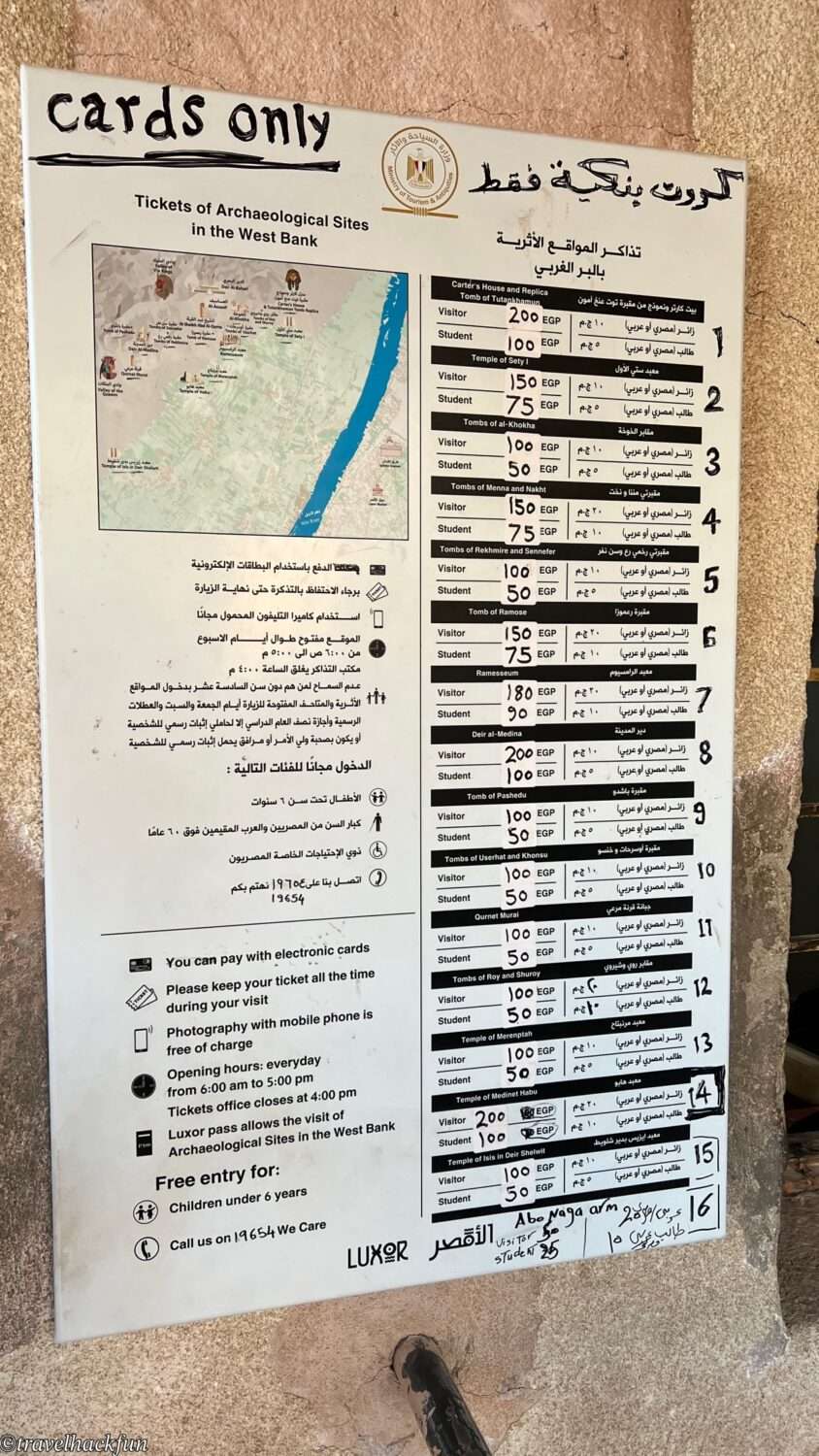
Medinet Habu | Highlights
Medinet Habu is a complex of structures with a long history, dating back to the 18th Dynasty. Pharaohs Hatshepsut and Thutmose III built a temple for Amun at this location. During the reign of Ramesses III in the 20th Dynasty, he constructed a grand mortuary temple on the existing site, which became the primary structure we see today. The outer walls of the complex were designed to resemble a Syrian fortress, complete with fortified gates and walls. The temple’s construction and decorations were completed progressively alongside Ramesses III’s military campaigns, making it a dynamic record of his military career.
Besides being a mortuary temple for Ramesses III, the site continued to be used until the Ptolemaic period. After the ban on pagan worship in Egypt, Medinet Habu became an important Christian center, with inhabitants living there as late as the 9th century CE. Even today, remnants of medieval mudbrick settlements can still be seen atop the temple walls (the word "medina" in Arabic means "town"). These fascinating layers of history can be observed while exploring the site.
Syrian Gate
The first major structure at Medinet Habu is the Syrian Gate, a unique fortified entrance. Unlike the traditional gateways of Egyptian temples, this gate features distinct Western Asian architectural elements, particularly inspired by Syrian fortresses. This design reflects the complex international political landscape of the New Kingdom, where Egypt had both military conflicts and cultural exchanges with the Syrian region. Pharaohs such as Thutmose III and Ramesses II launched military campaigns in Syria, influencing architectural styles.
The Syrian Gate features two small watchtowers, a narrow passageway, and a high-rise fortification built from stone. This type of defensive construction was uncommon in Egypt but was widely used in Mesopotamia and the Syrian-Babylonian regions. The towering gateway and thick walls provided additional protection for Medinet Habu.
On the walls of the Syrian Gate, the carvings are exceptionally deep. Many of the reliefs here are incised reliefs rather than the more common raised reliefs, meaning the patterns are deeply carved into the stone rather than raised from the surface.
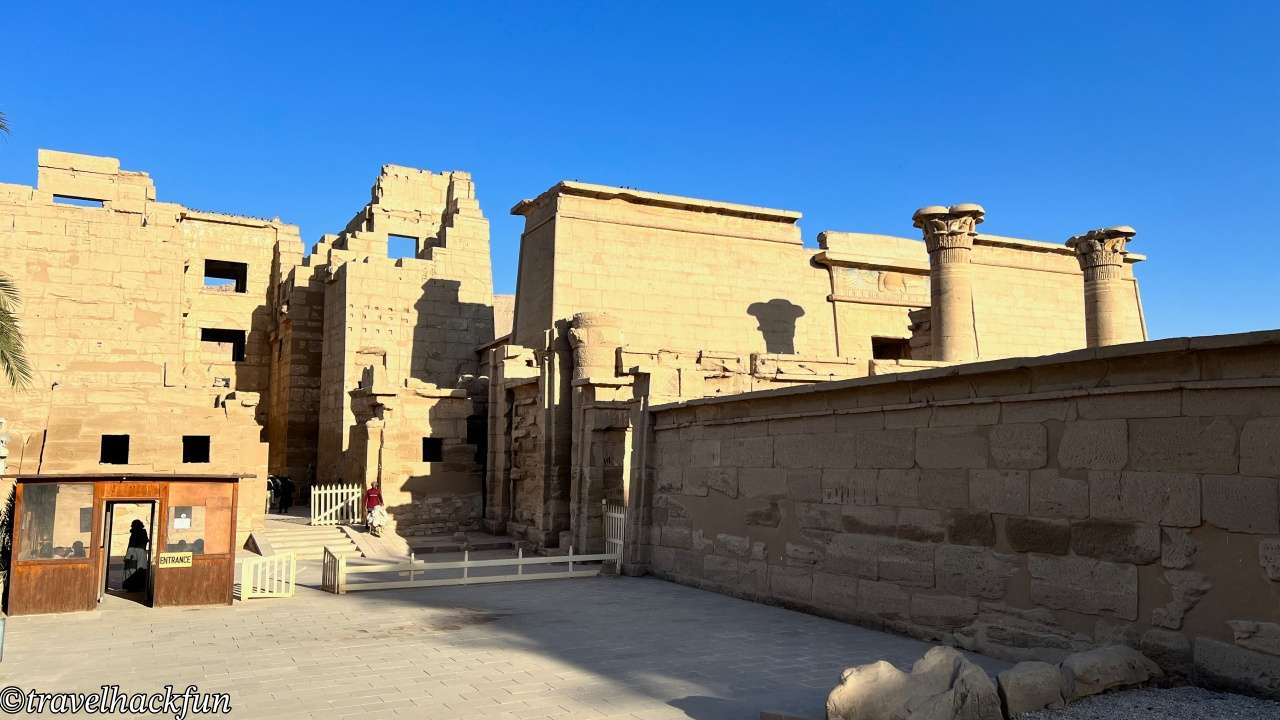
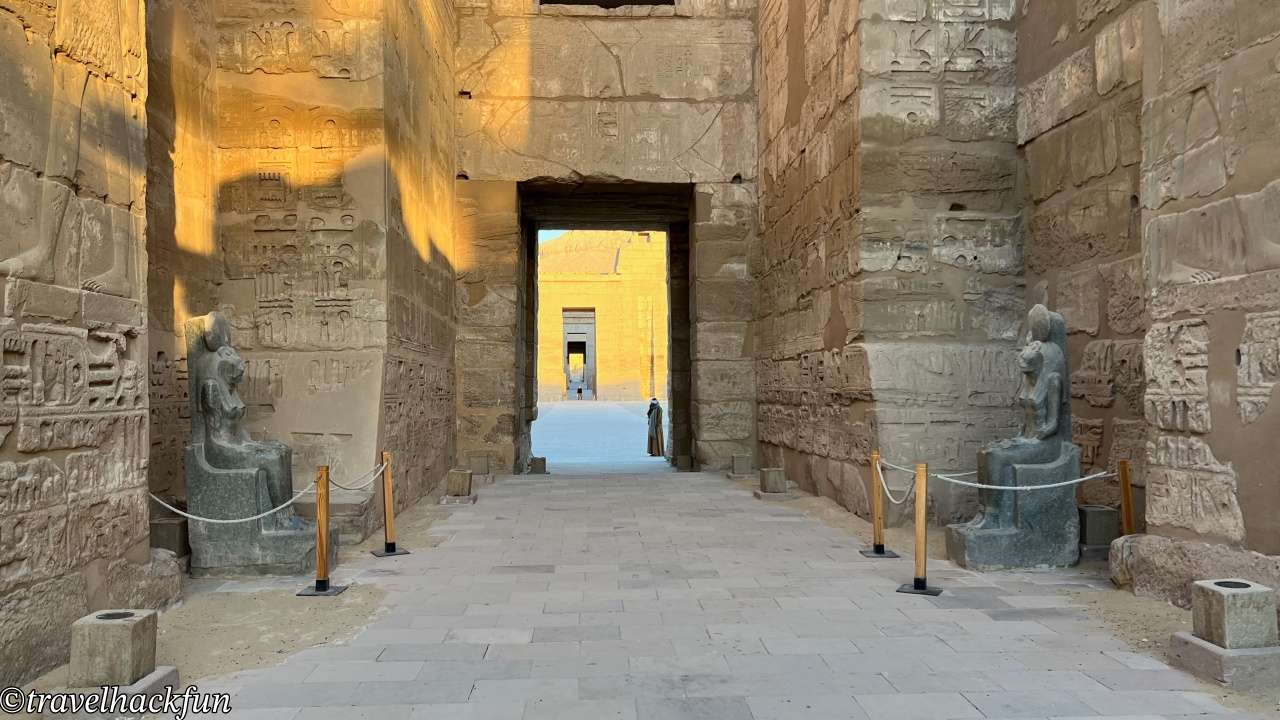
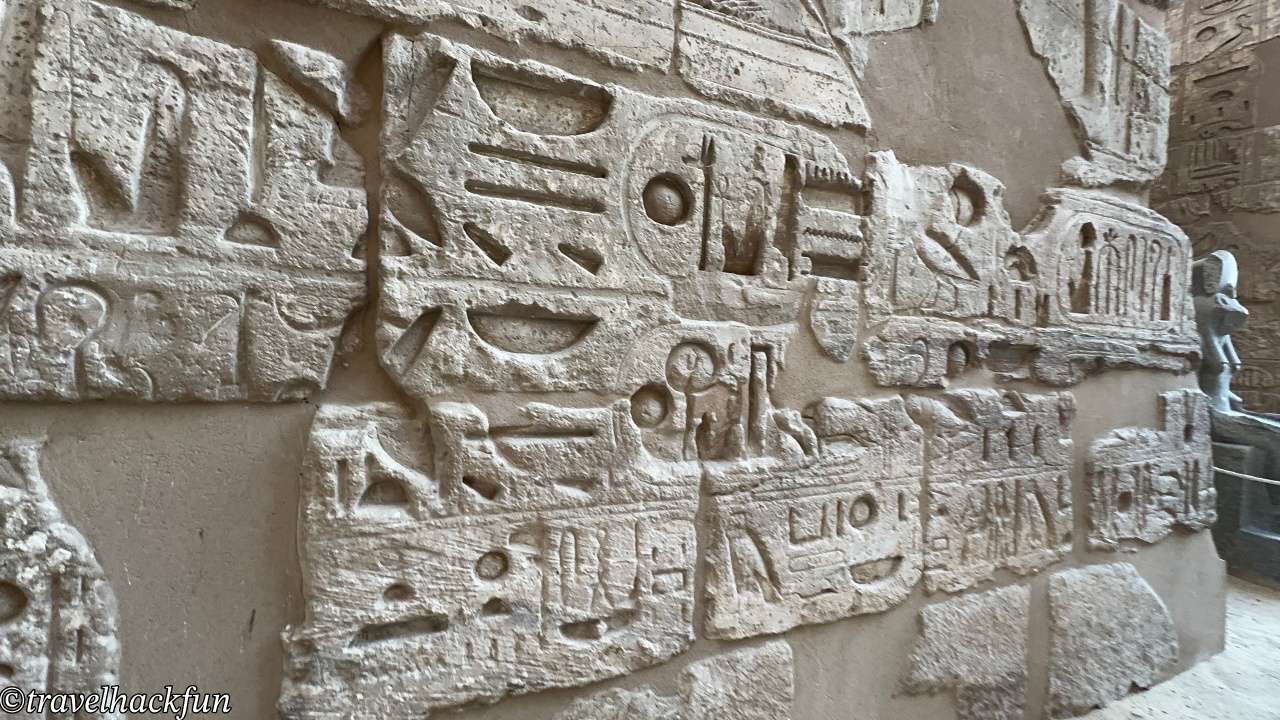
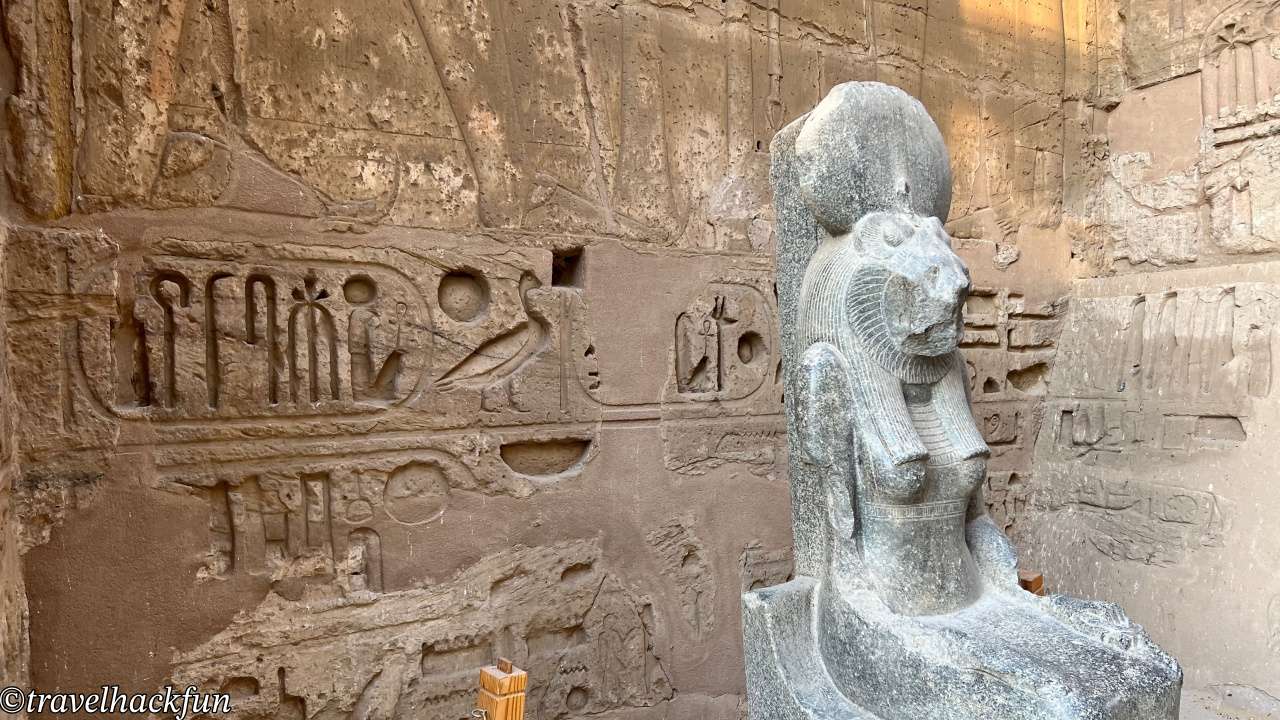
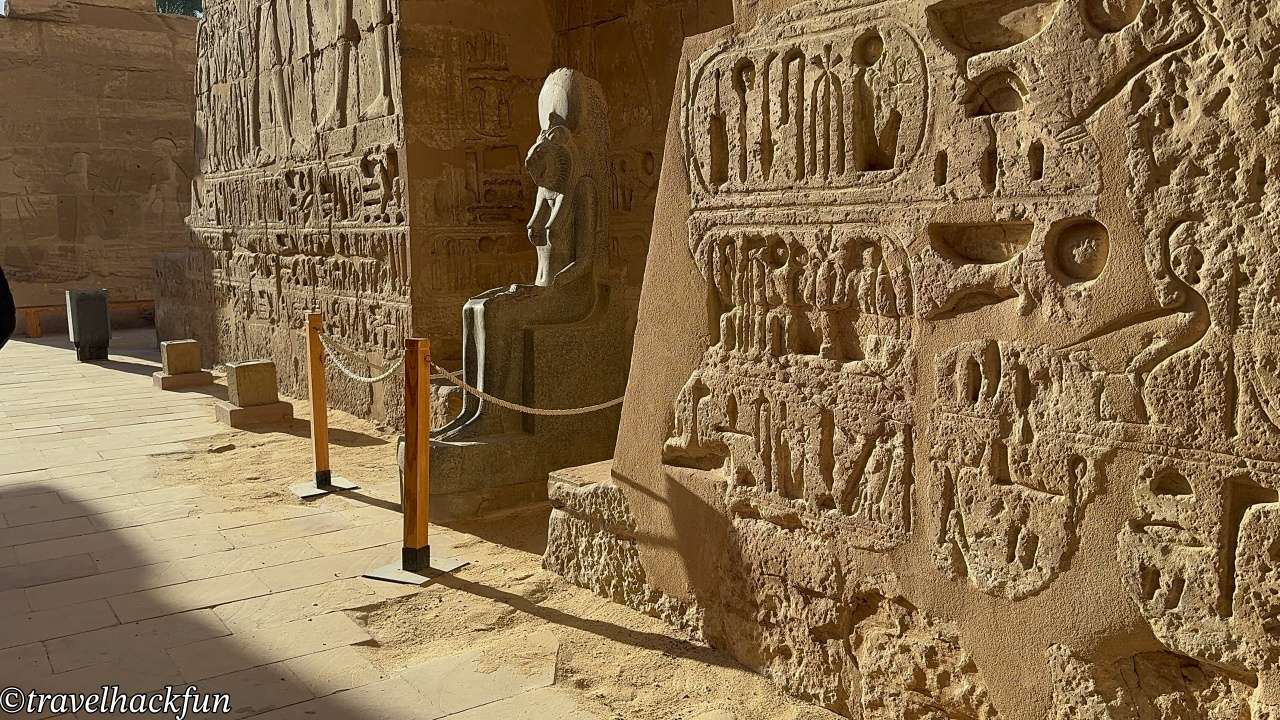
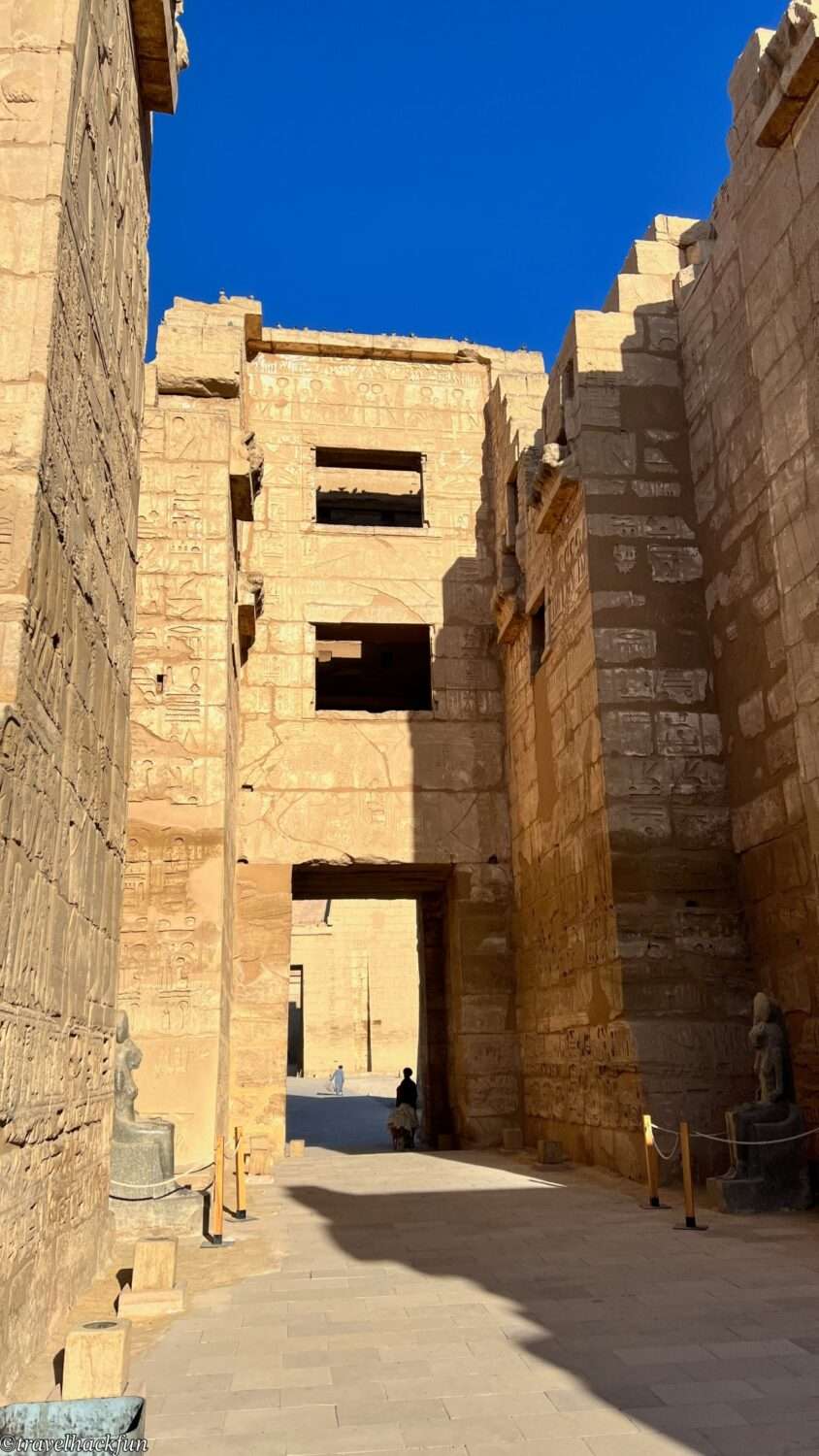


Beyond the gate is a large open courtyard. On the right, visitors can see the remains of the 18th Dynasty temple built by Hatshepsut, while on the left are shrines from the 25th Dynasty. Further back, ongoing archaeological excavations continue, and future restorations may reveal even more of the site’s history.
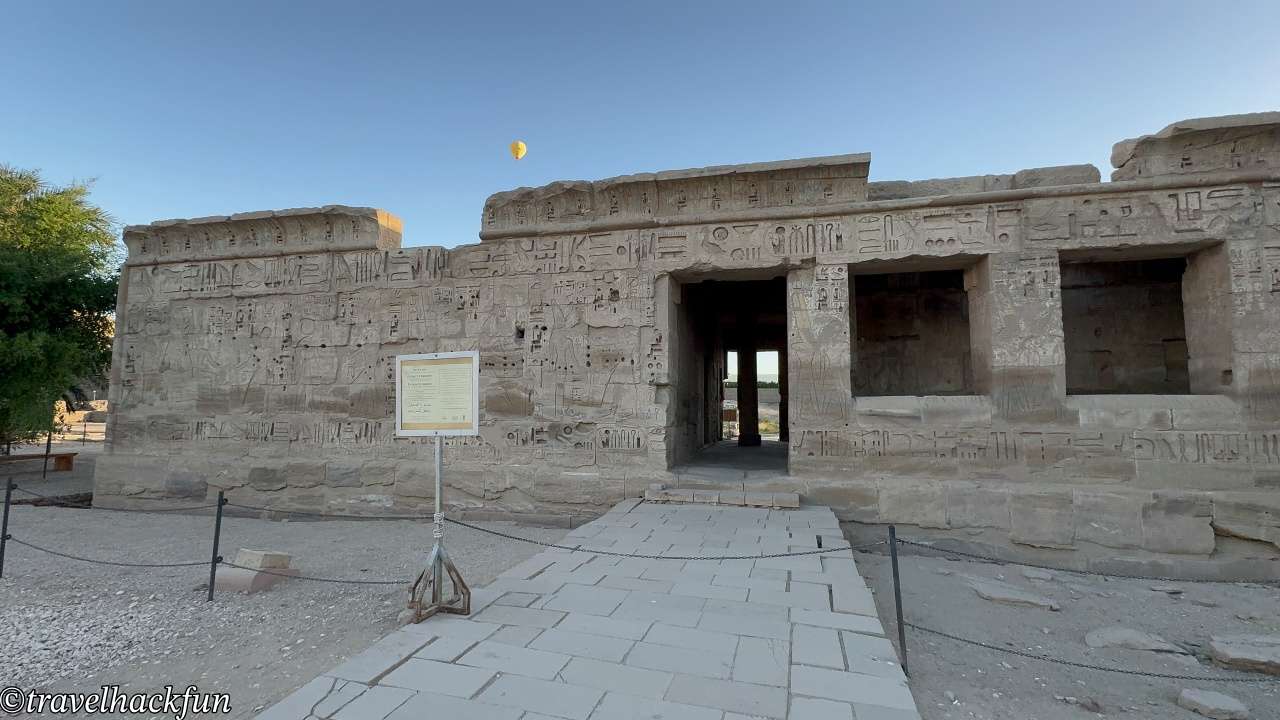
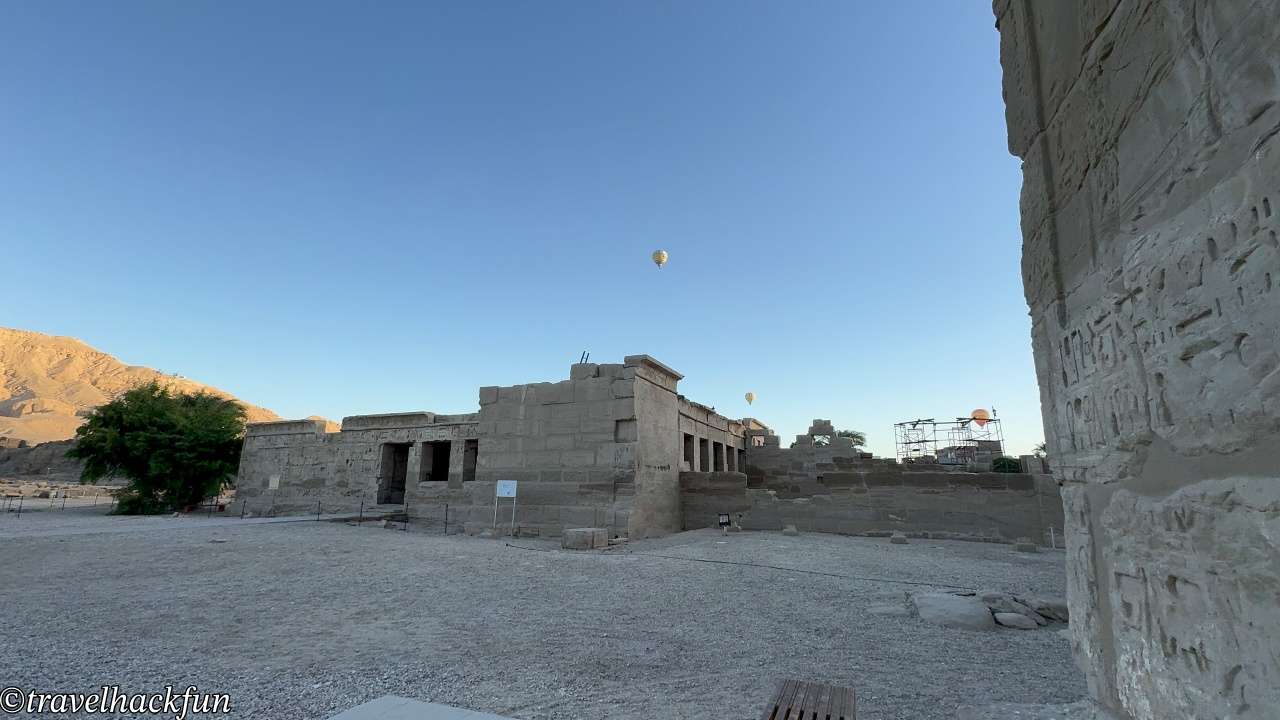
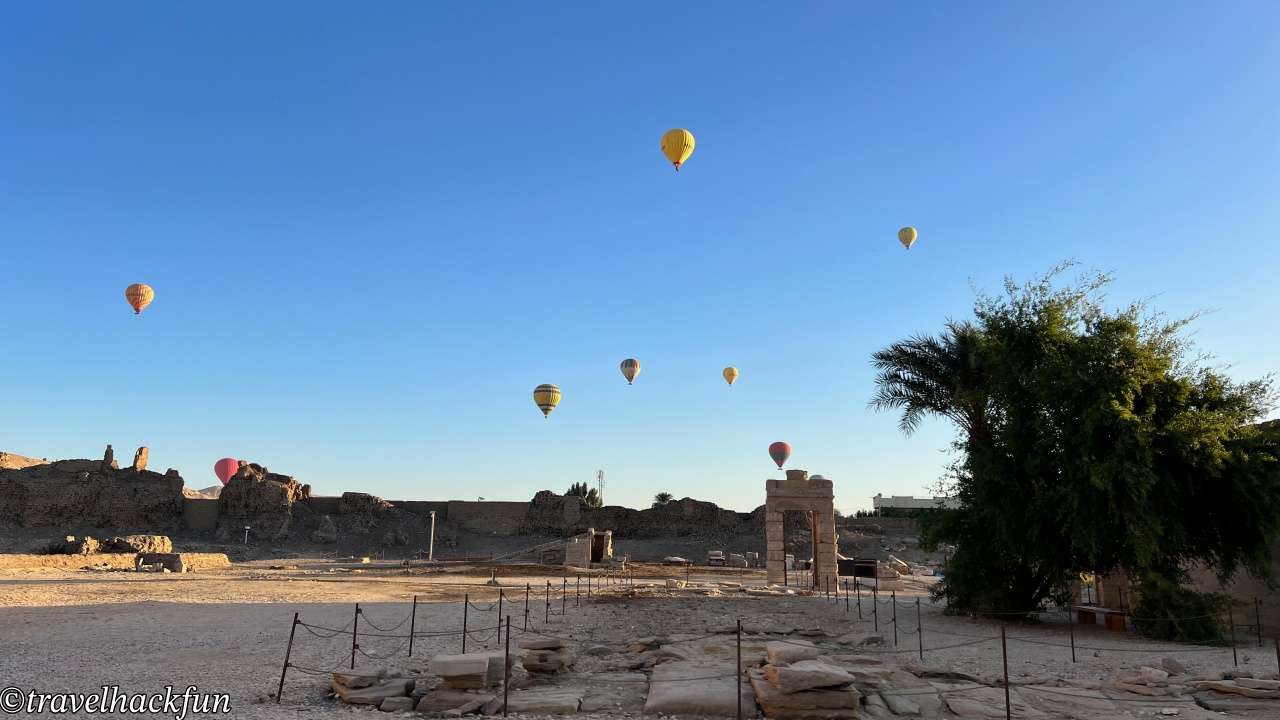
First Pylon
After passing through the Syrian Gate and the outer areas, visitors arrive at the First Pylon, the main entrance to Medinet Habu. This monumental stone gateway officially marks the entrance to the temple’s inner sanctum. Standing at an impressive 22 meters high, it was a remarkable feat of engineering for its time. The pylon once had slots for flagpoles, which may have flown banners symbolizing Egypt’s glory.
The reliefs on the pylon depict Ramesses III’s military victories. The north side shows him wearing the Red Crown of Lower Egypt, accompanied by his Ka (spiritual double), presenting bound captives to the god Ra. The south side depicts him wearing the White Crown of Upper Egypt, executing prisoners before the gods. Below, rows of defeated enemies are carved into the stone.
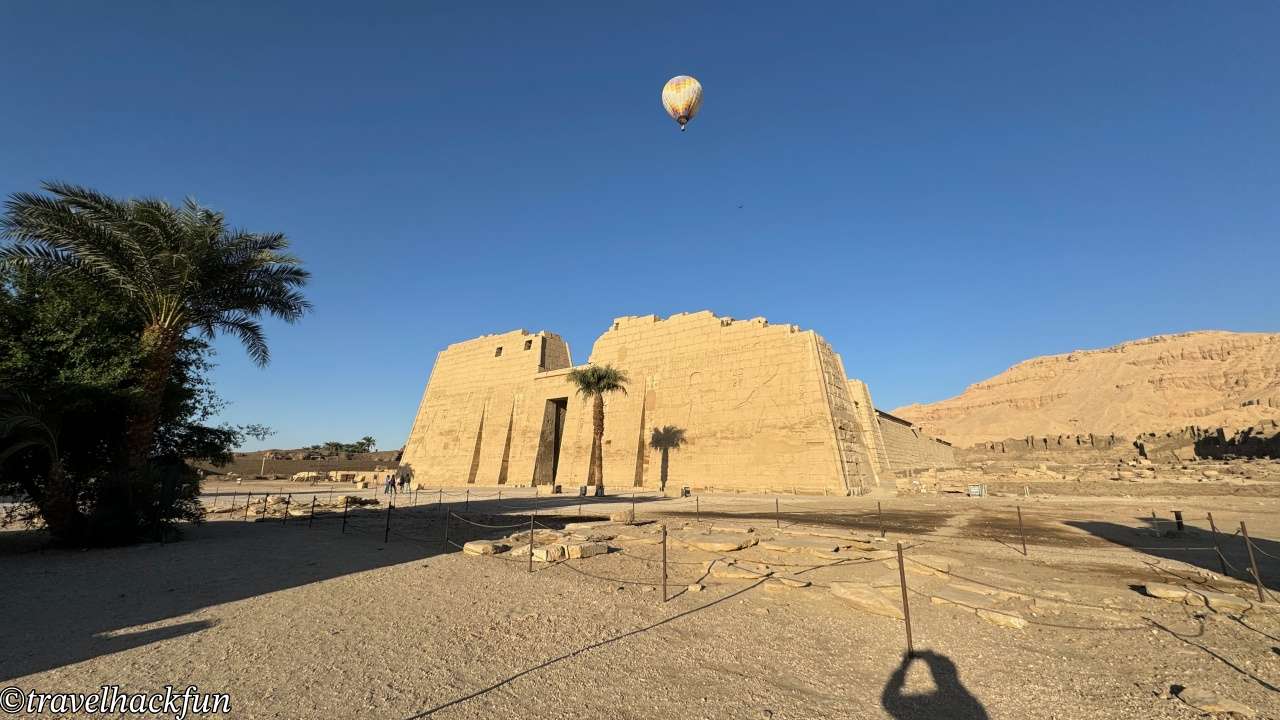
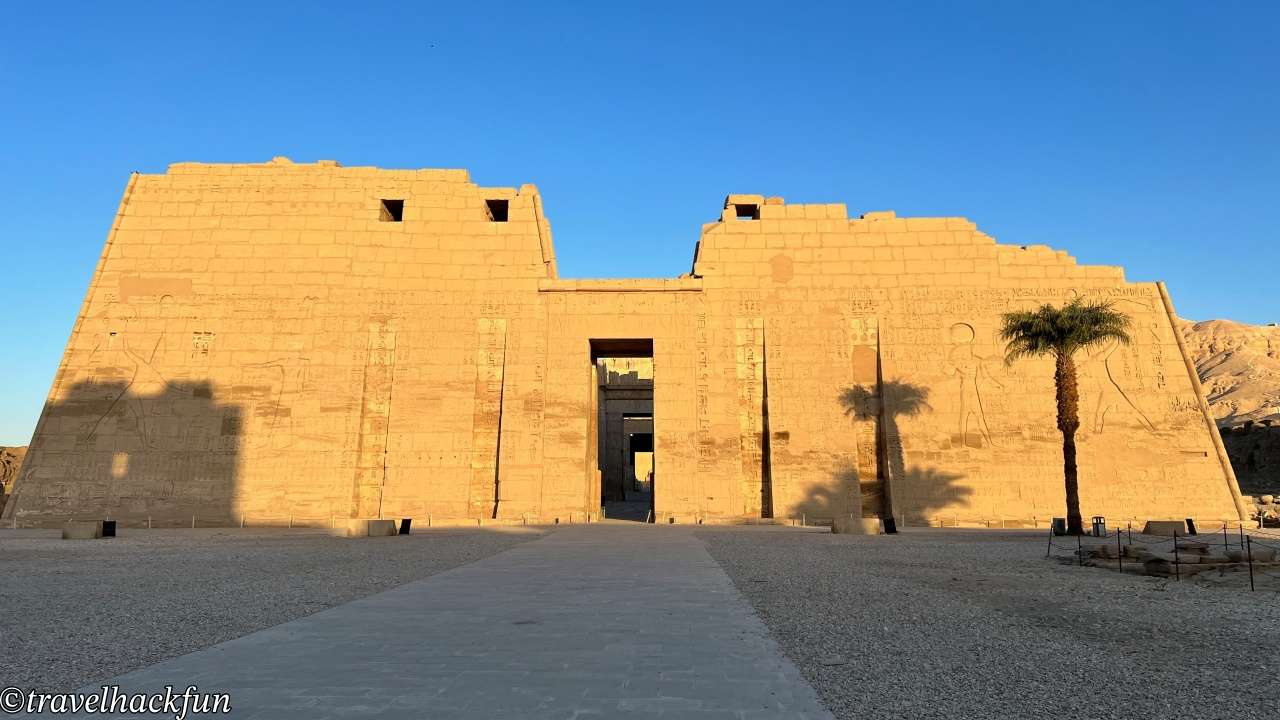
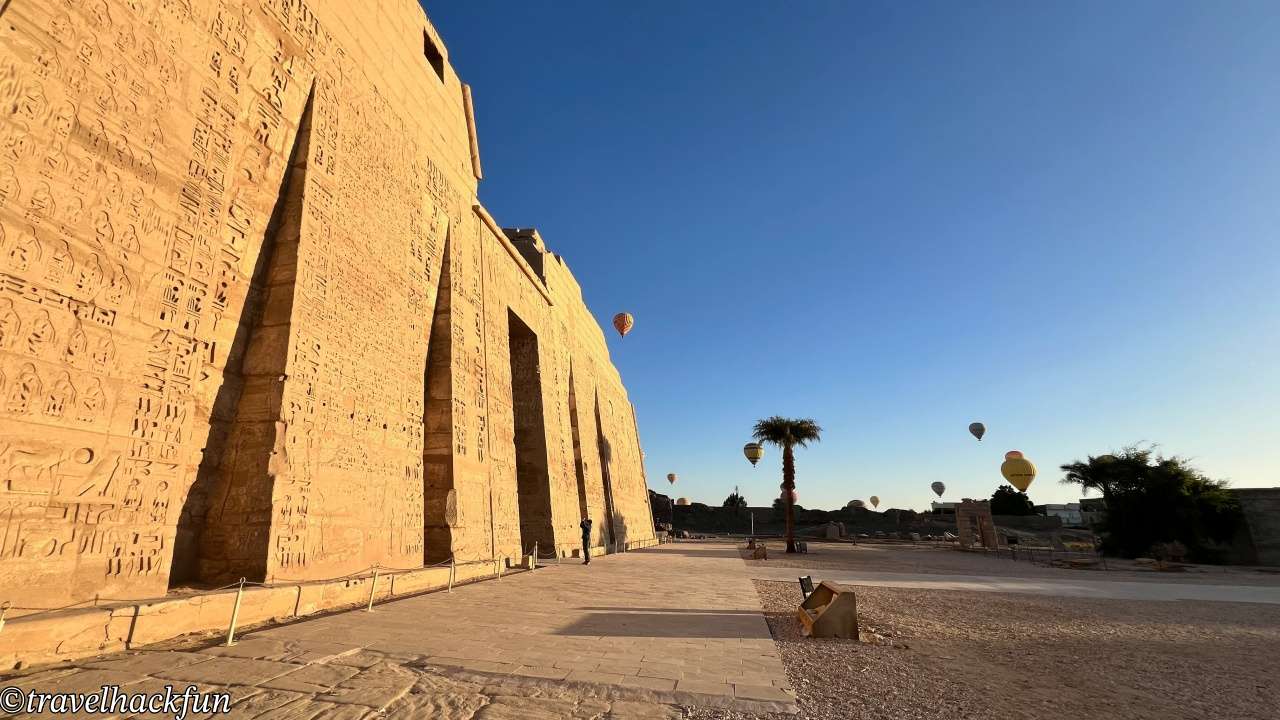
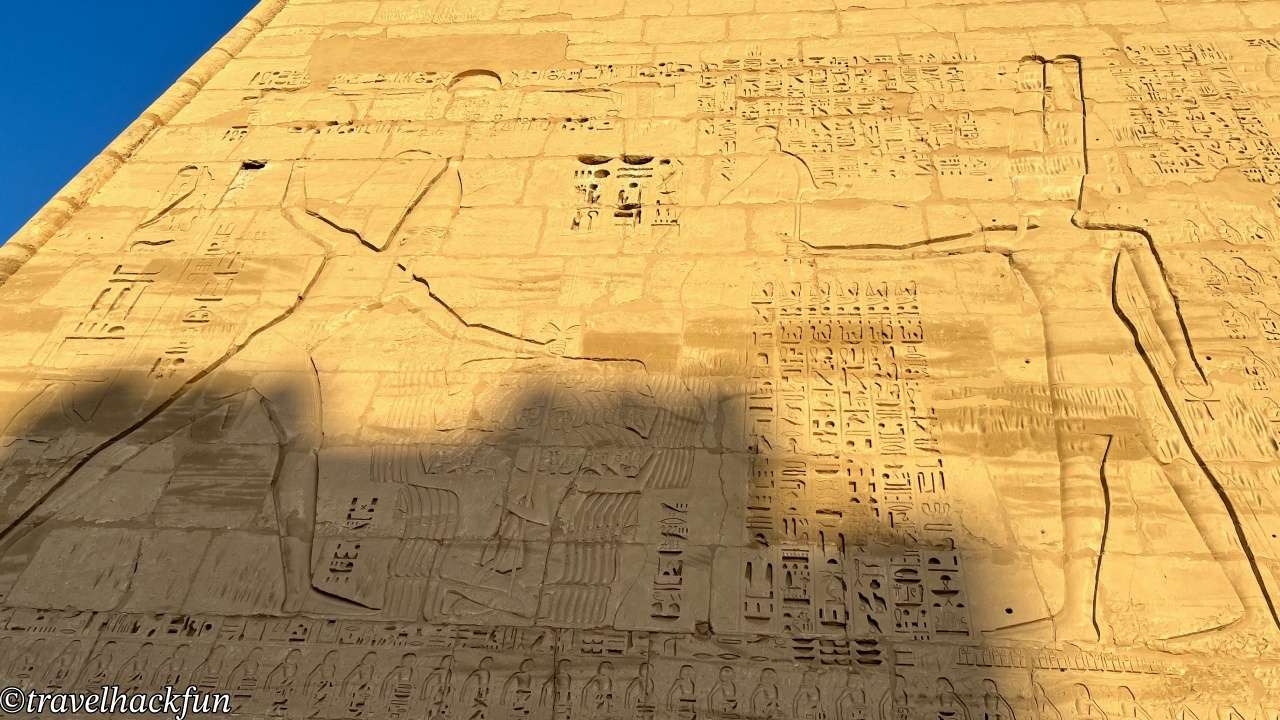
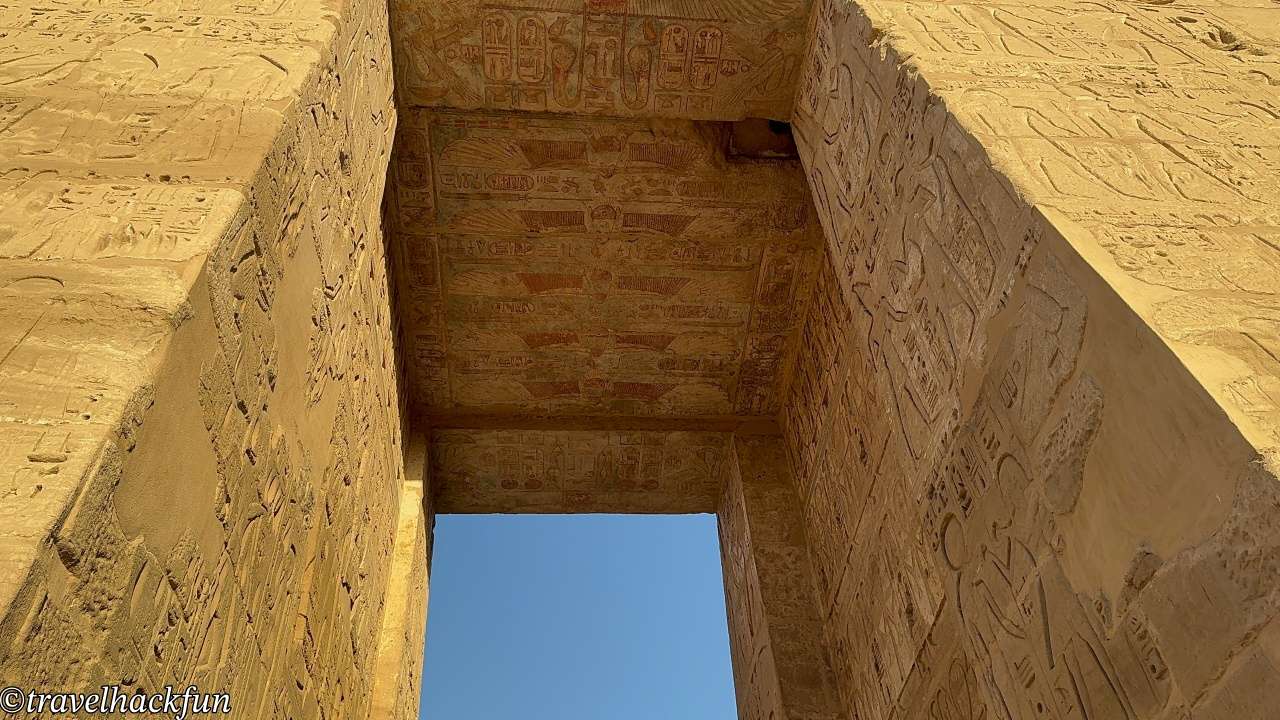
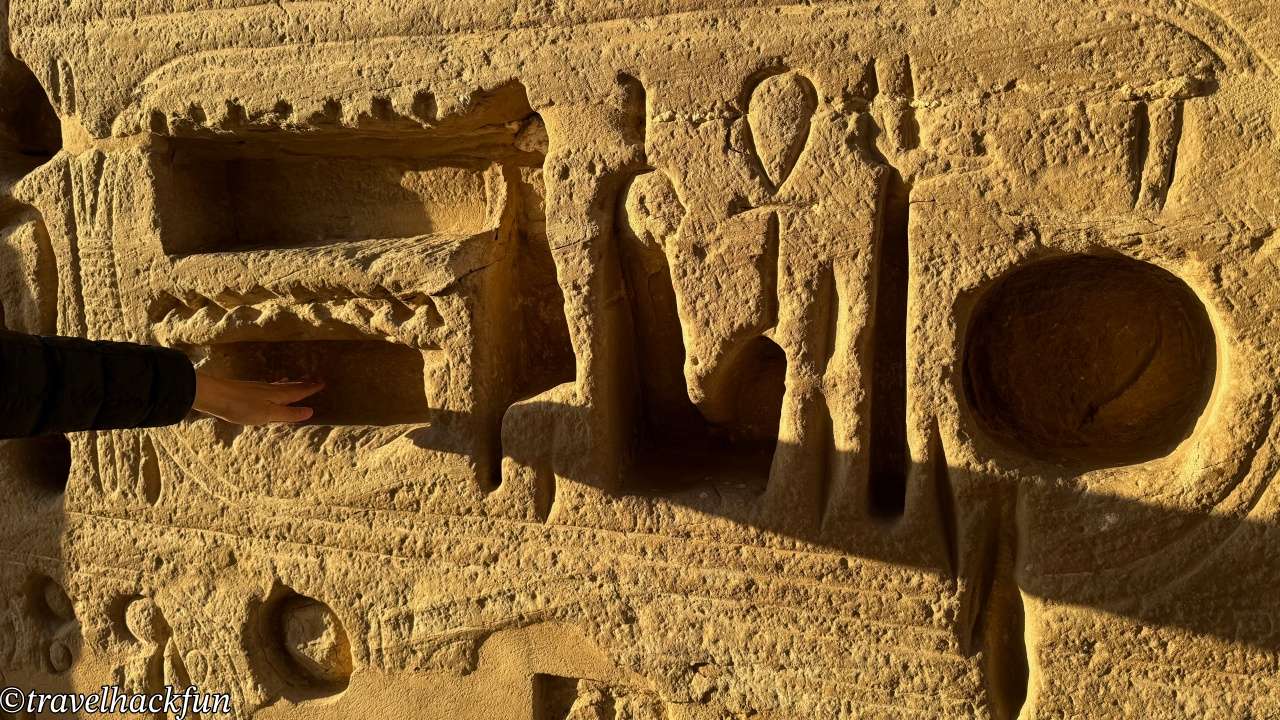

Walking through the First Pylon leads to the First Courtyard, and turning back reveals another striking scene—Egyptian scribes counting severed hands and genitals of enemies to record battle casualties, a brutal yet historically significant depiction of ancient warfare. Another notable relief shows Ramesses III riding a chariot into battle, vividly illustrating the power of the Egyptian army.
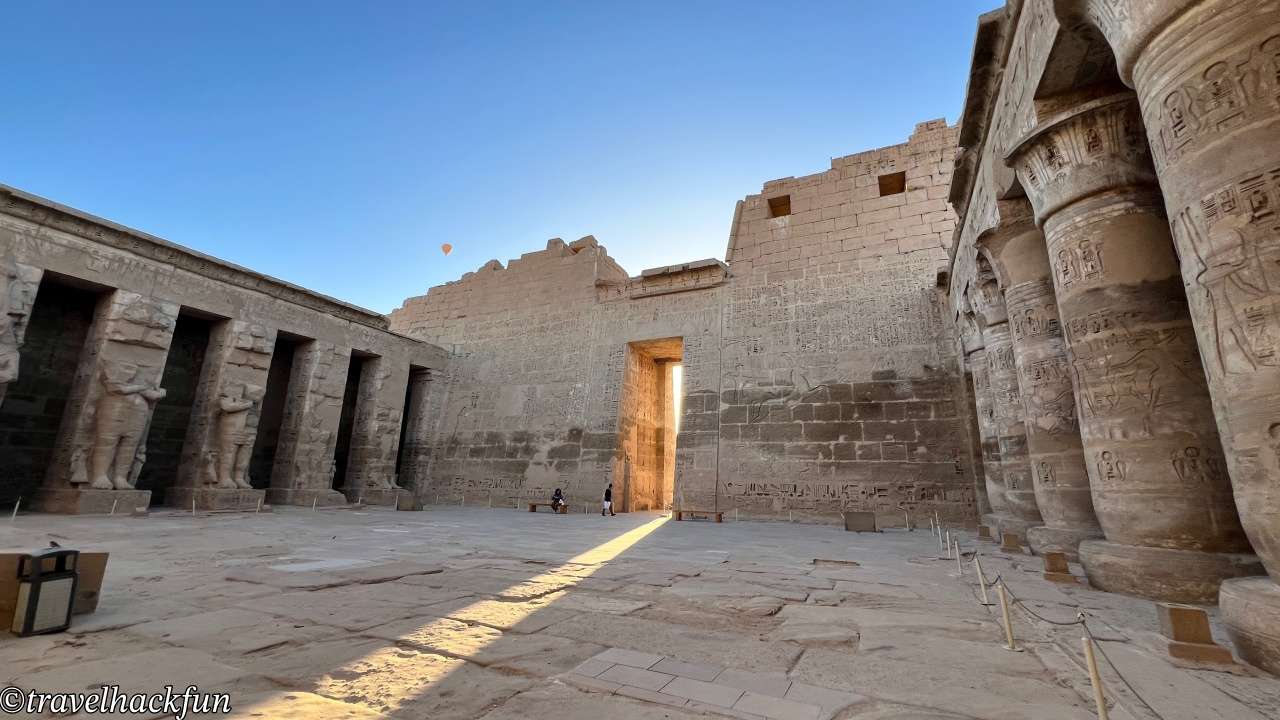
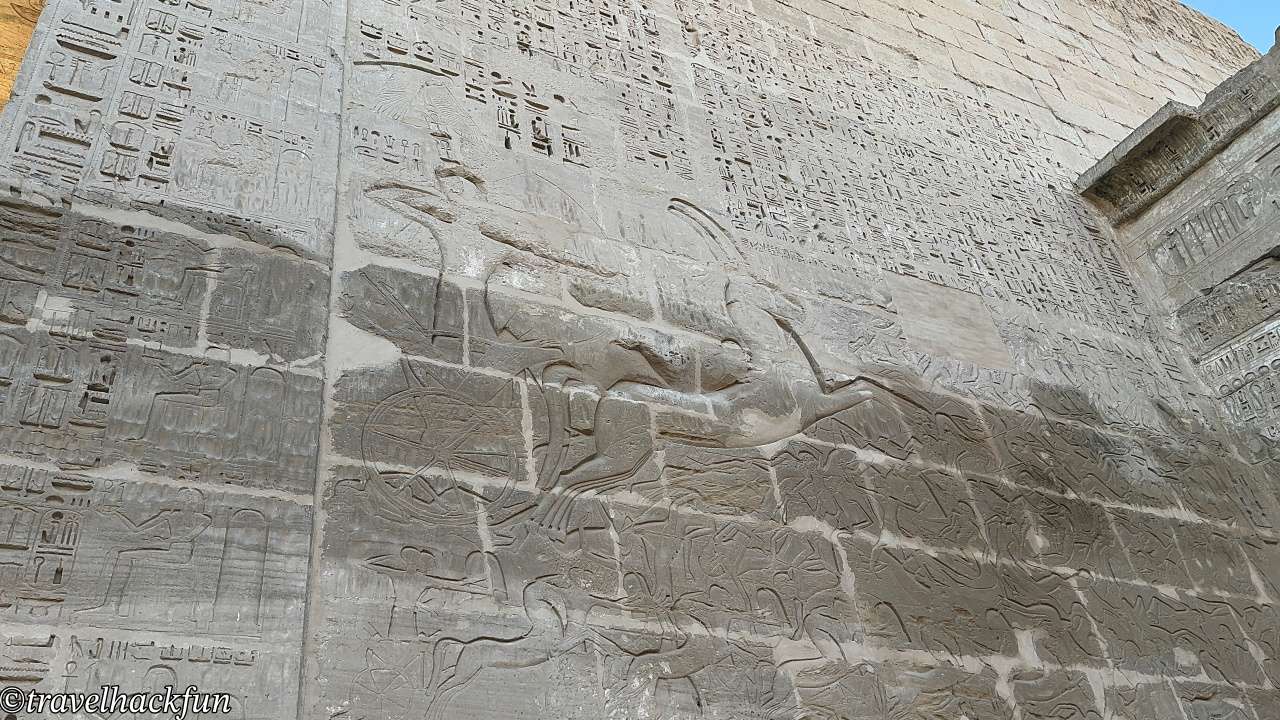
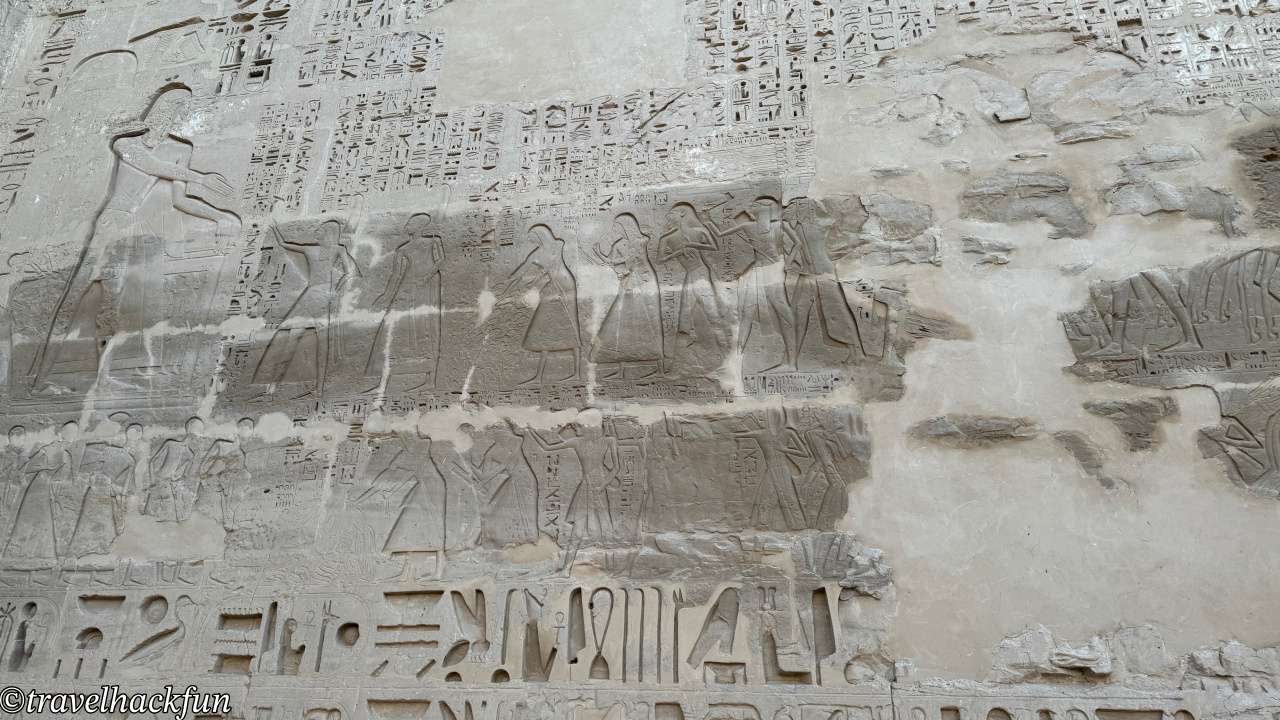
First Courtyard
The First Courtyard features columns with papyrus-bundle capitals on the left and a colonnade with Osiride statues of Ramesses III on the right. One wall depicts the Libyan Campaign, showing mercenaries wearing distinctive round helmets adorned with horns. Another relief illustrates Ramesses III's victory parade, where he presents prisoners to the gods Amun and Mut. The carvings also contain inscriptions recording his triumph over the Great League of the Sea Peoples.
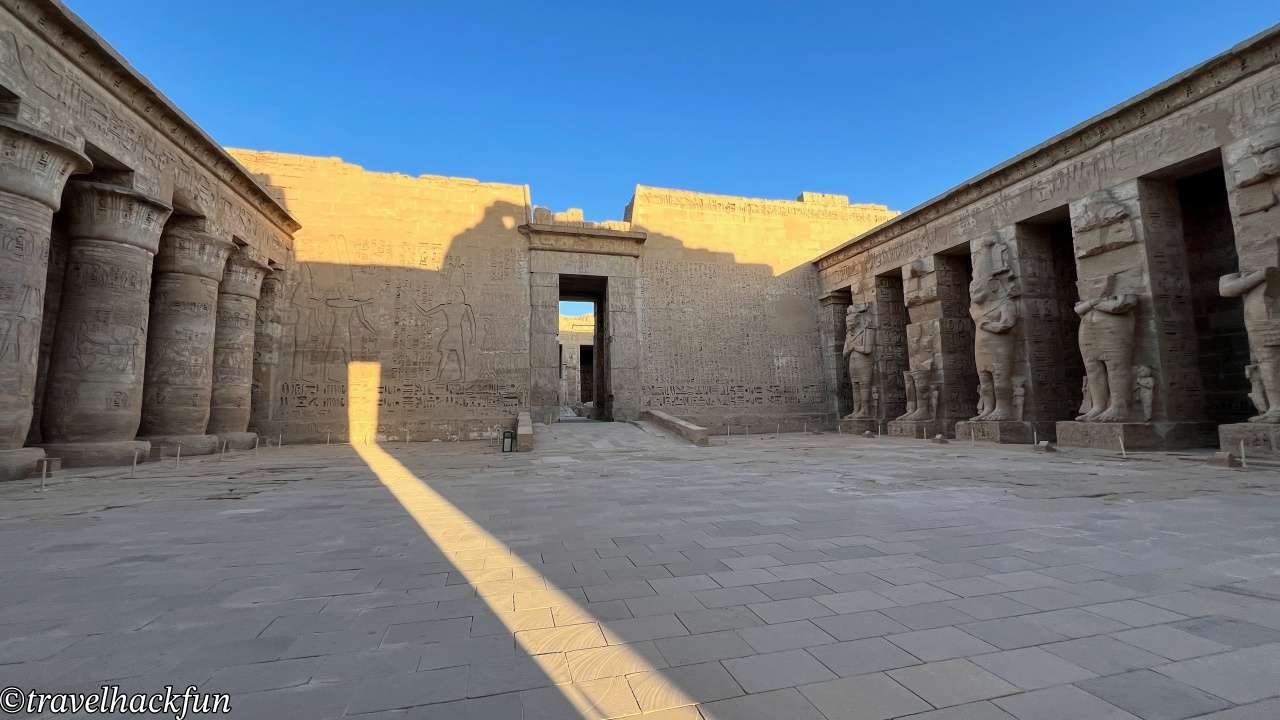
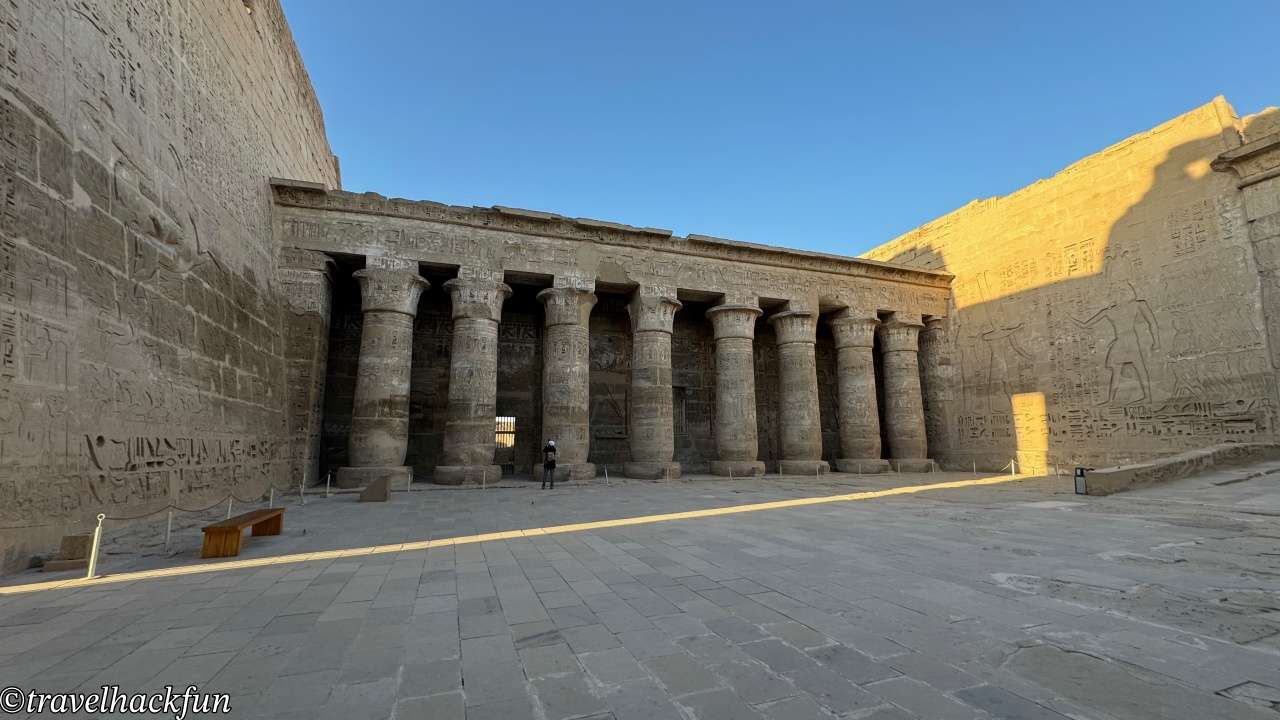
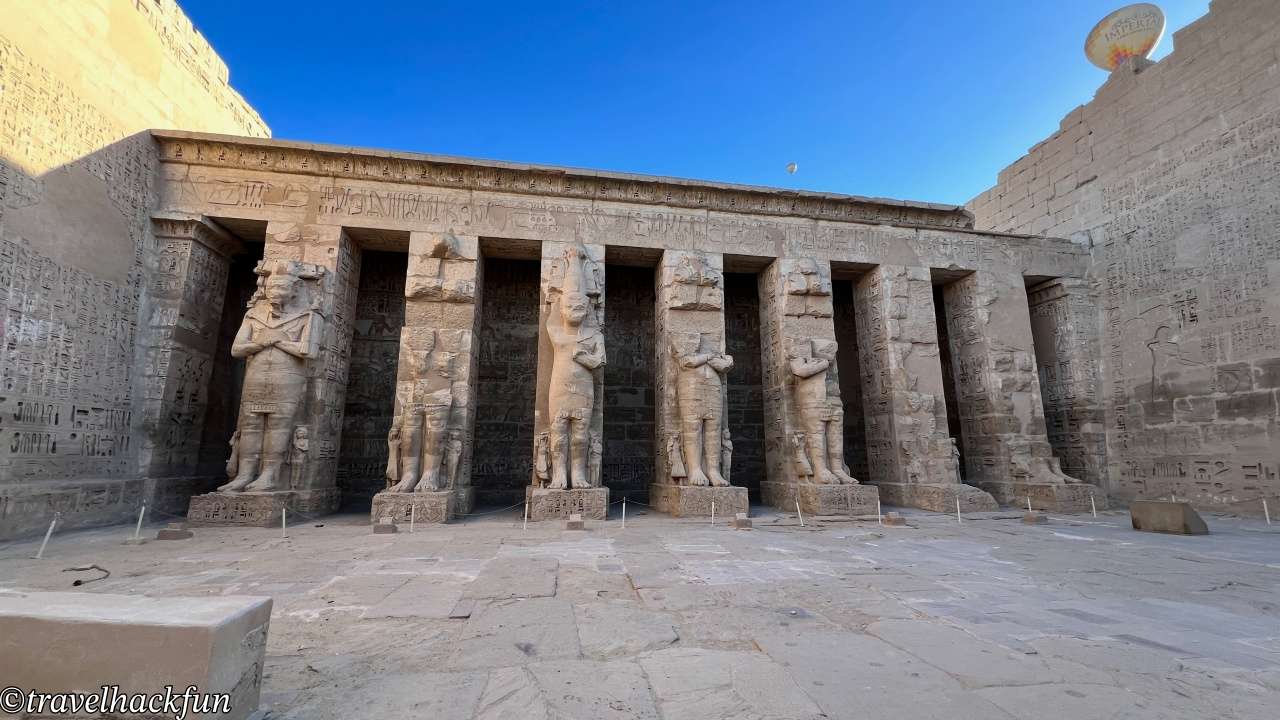
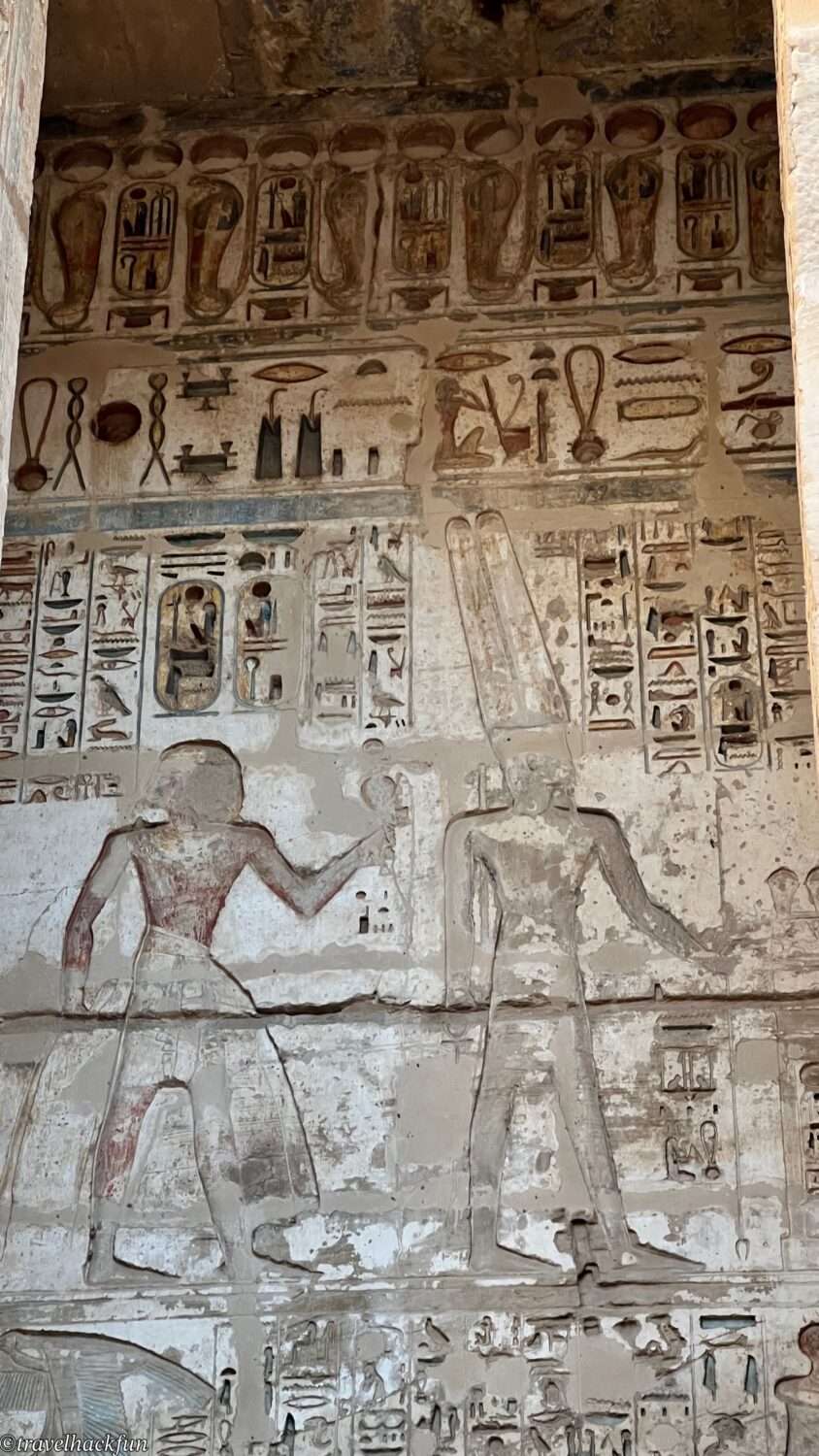





Second Pylon & Second Courtyard
Beyond the Second Pylon is the Second Courtyard, later repurposed as a Christian church. Many of the original reliefs were plastered over, inadvertently preserving them.


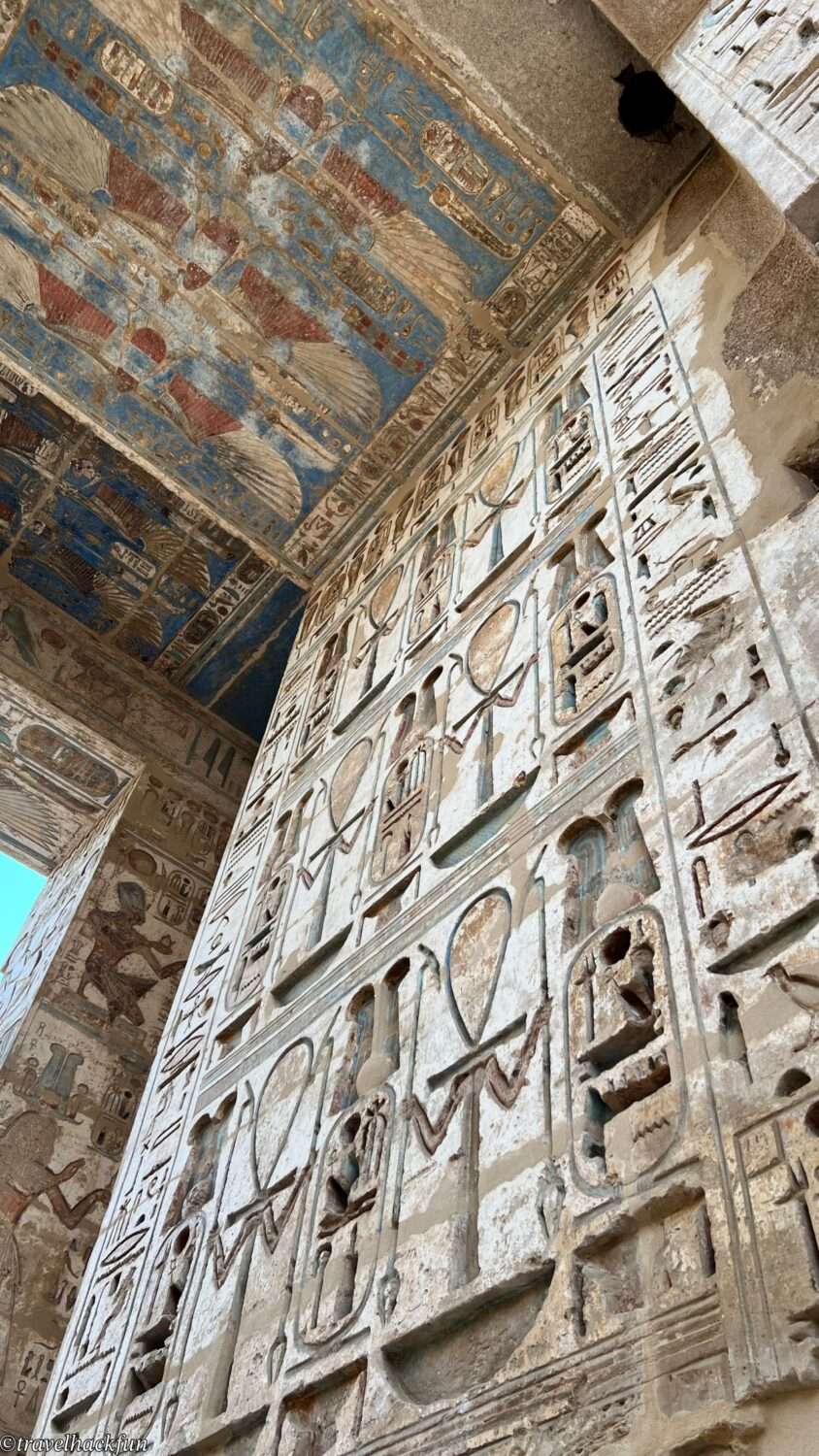
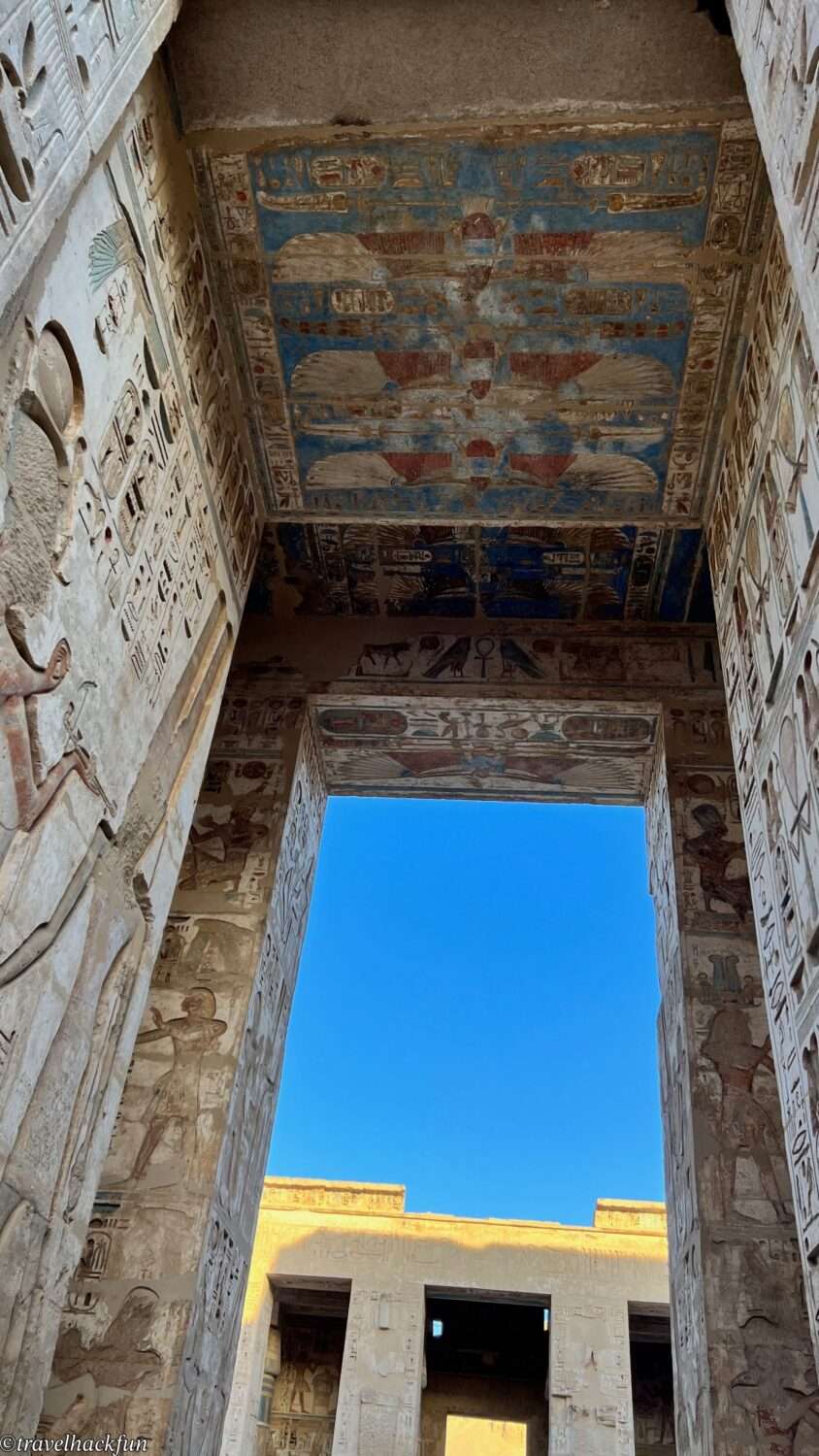

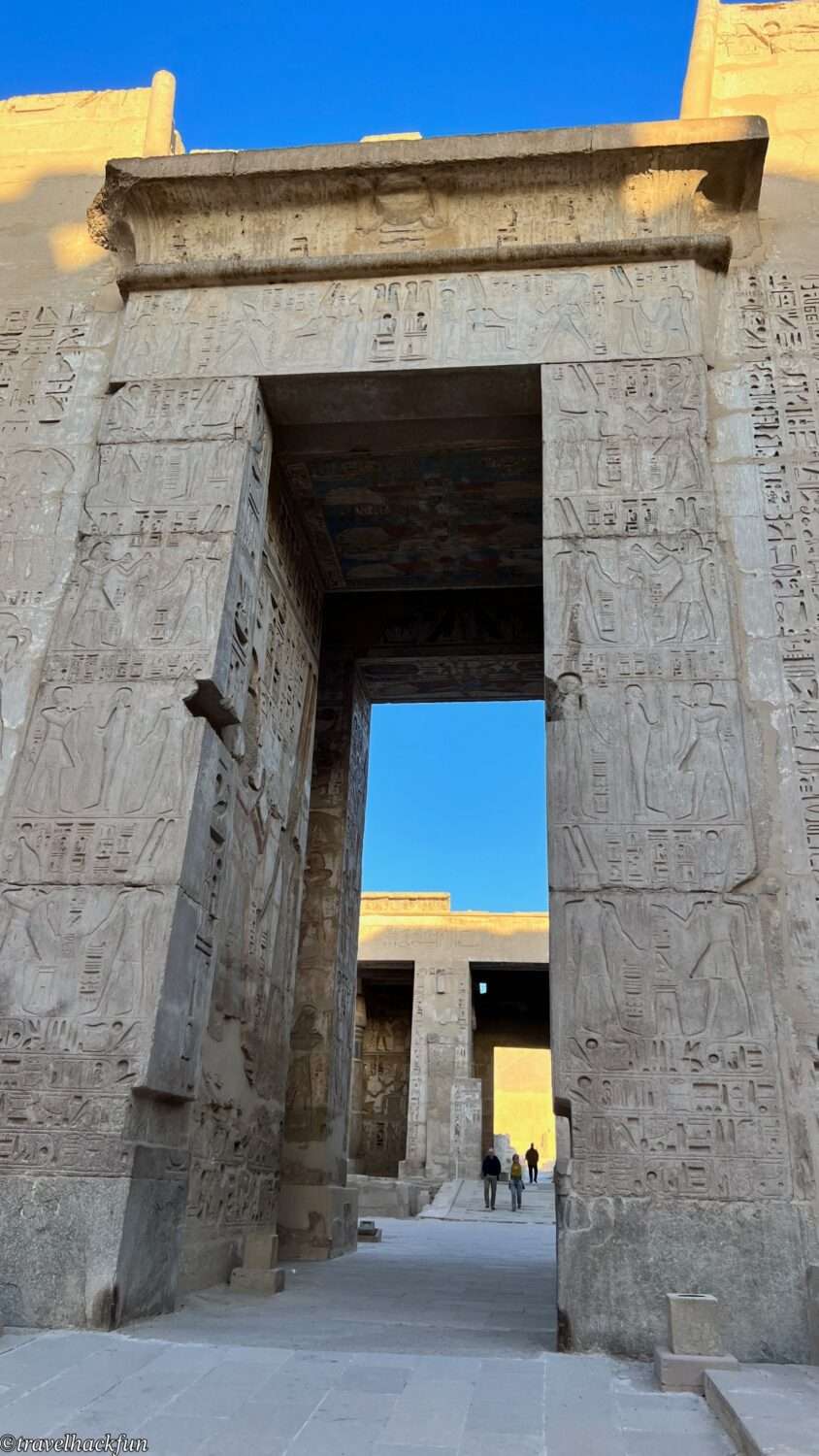
This courtyard features scenes of religious festivals, including the Festival of Min and the Ptah-Sokar Festival. The walls also depict Ramesses III’s war campaigns, with dramatic battle scenes portraying him firing arrows from his chariot, capturing enemies, and offering prisoners to the gods.
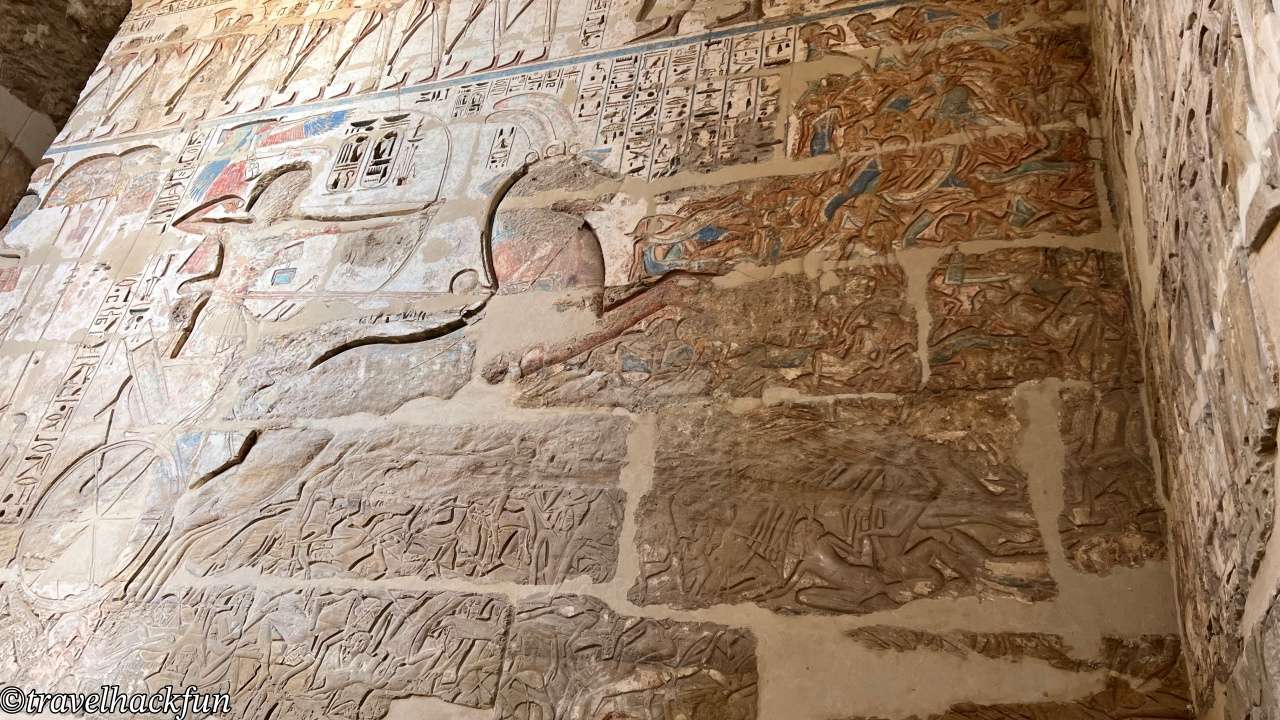
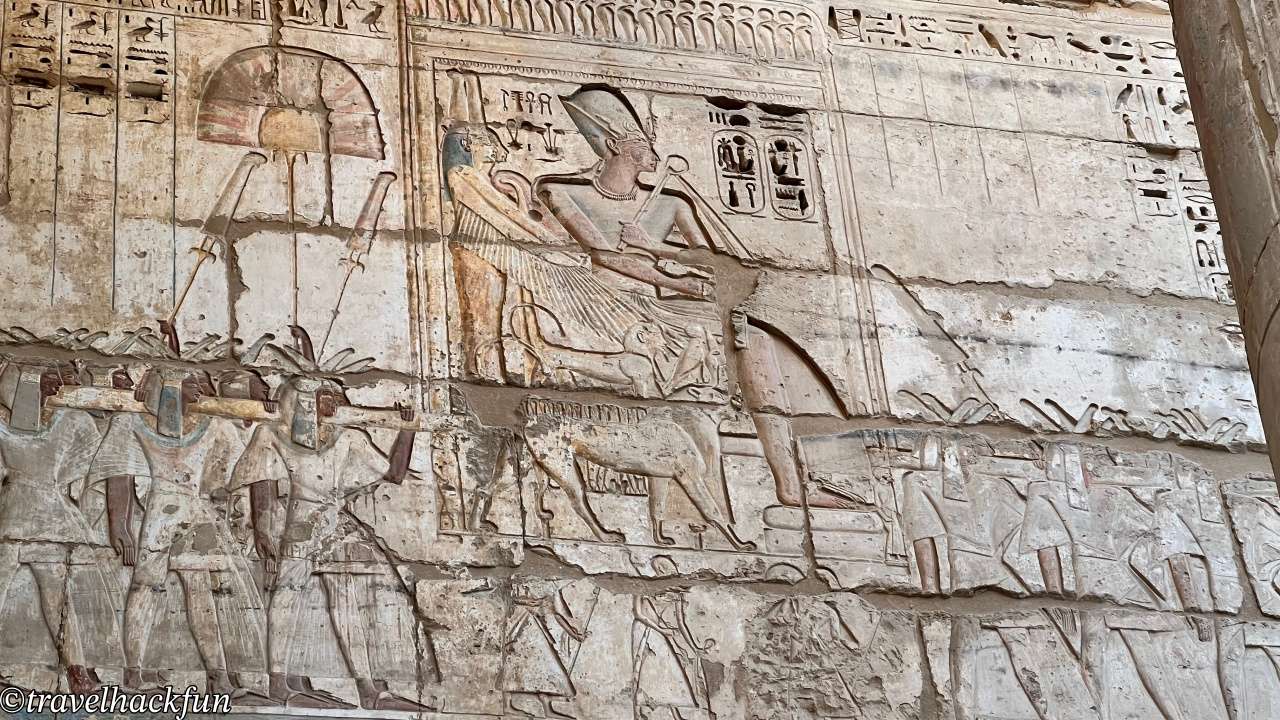
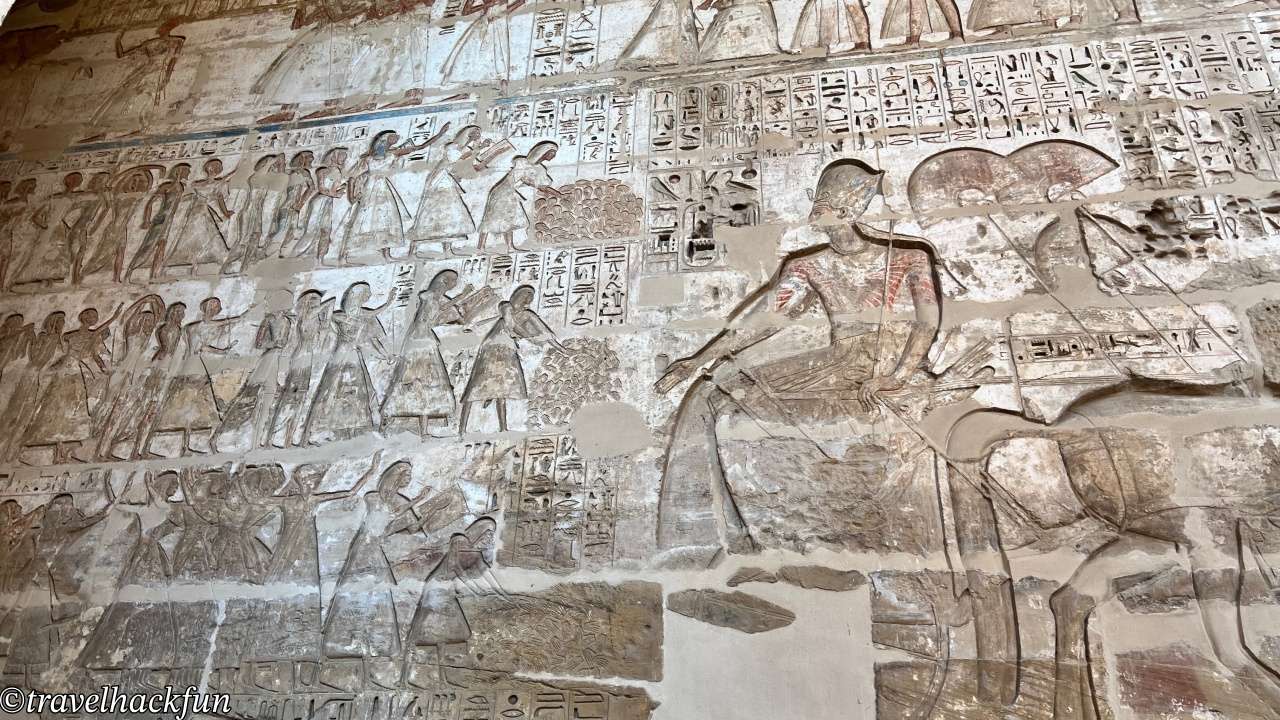
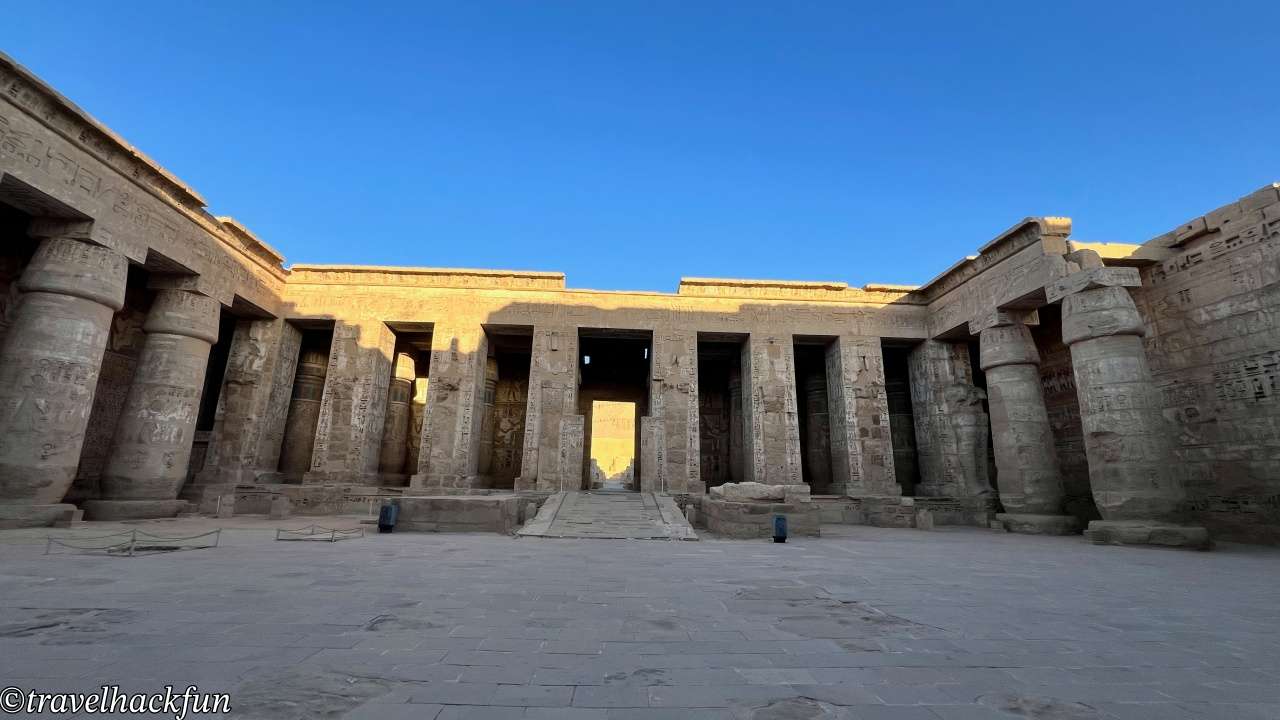
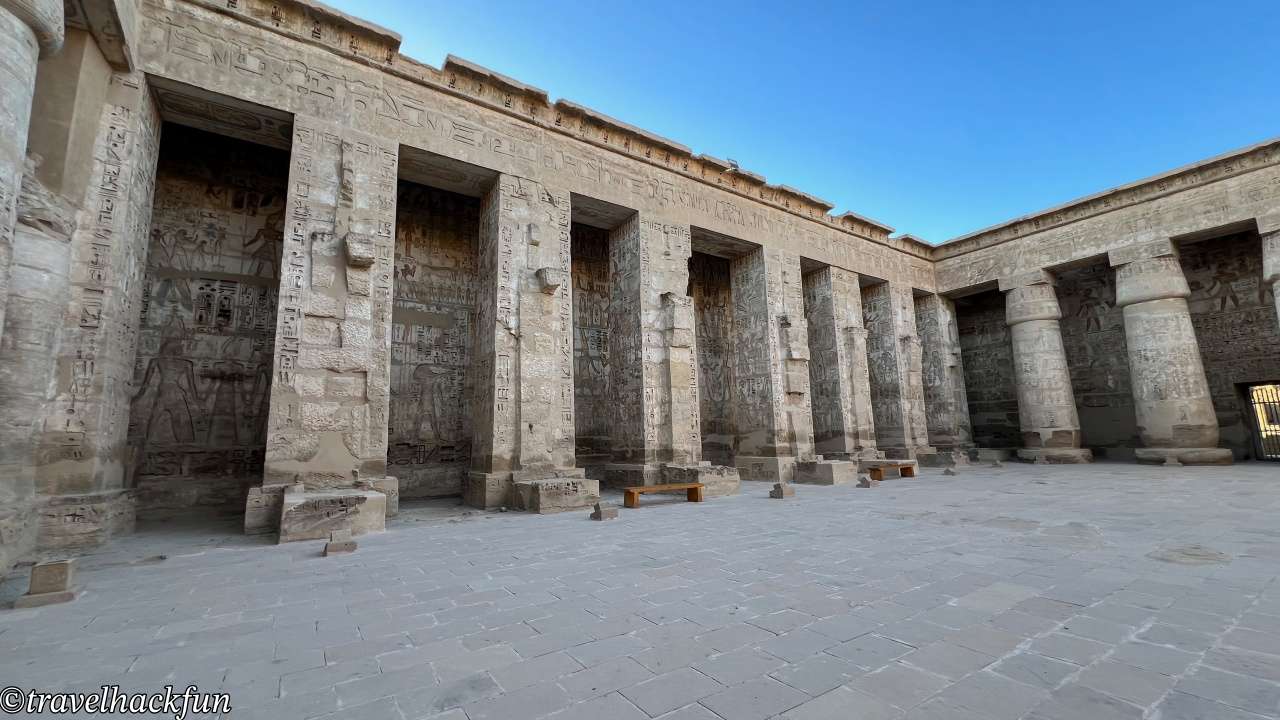
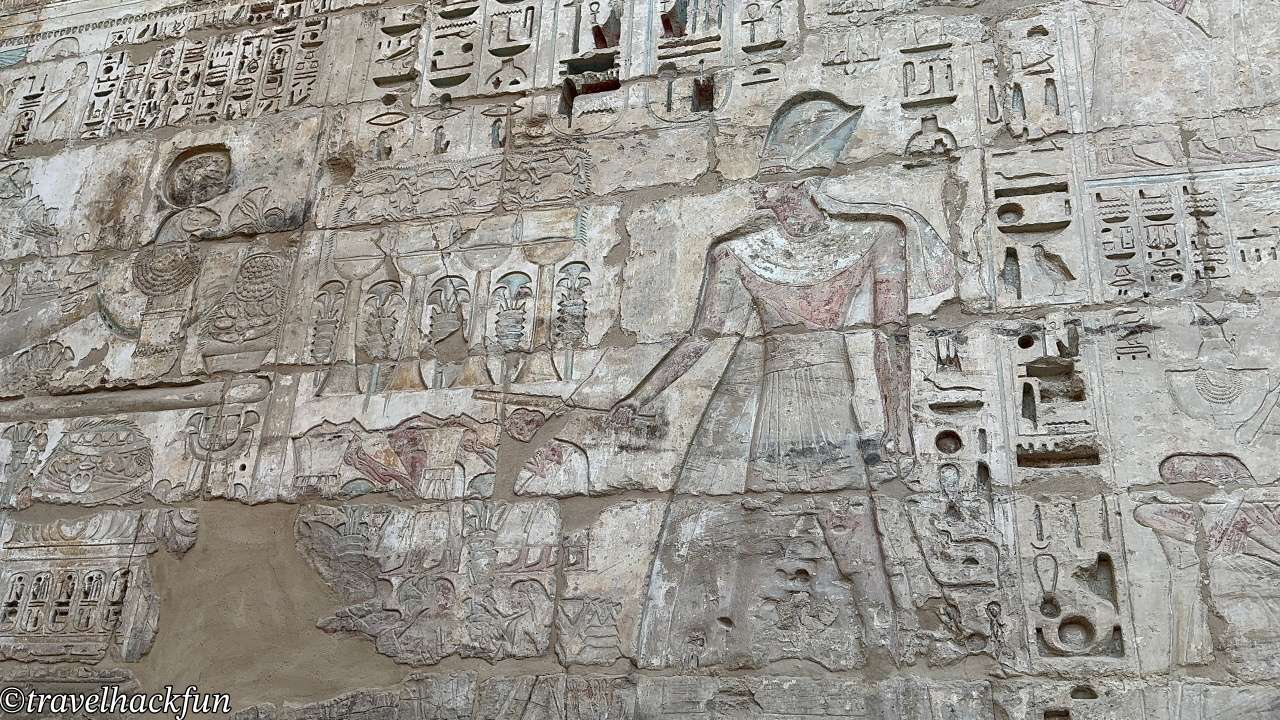
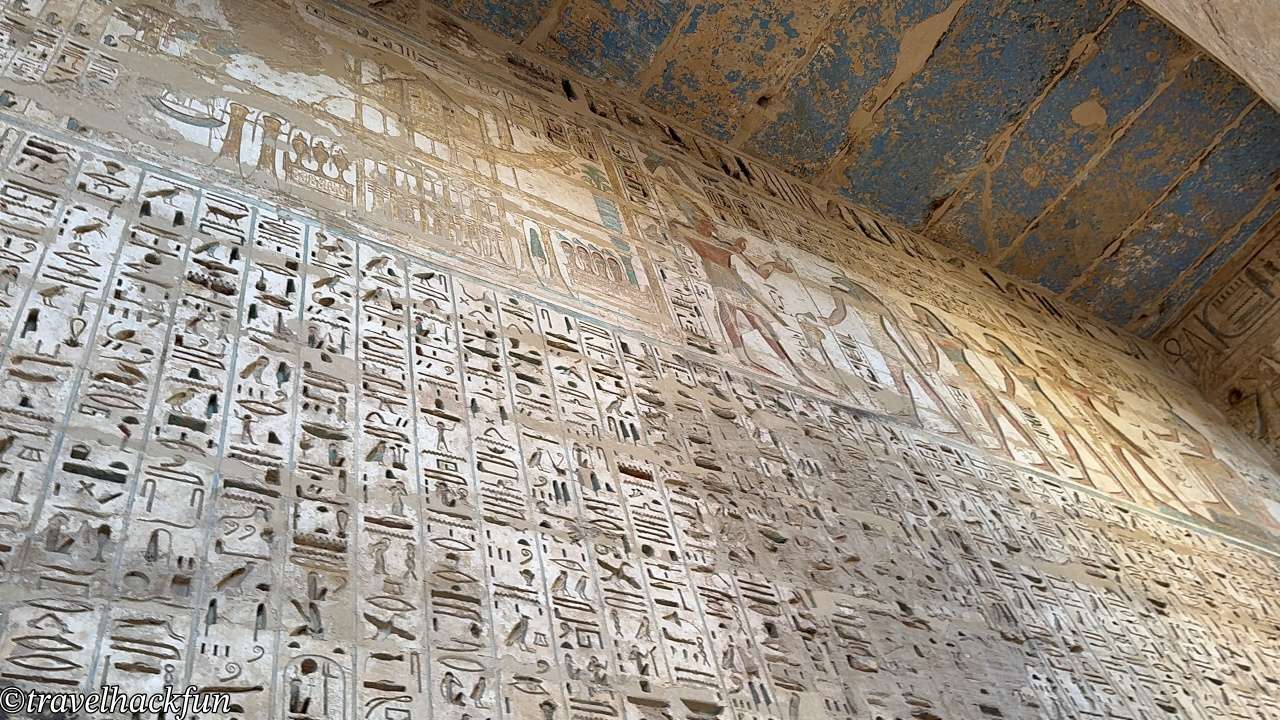
Colonnade
The colonnade near the rear of the temple is supported by massive stone columns, some of which still retain traces of their original vibrant colors. These remnants provide a firsthand glimpse into the ancient Egyptians' use of pigments. The reliefs on the columns depict religious ceremonies and interactions between the pharaoh and the gods, such as Amun.


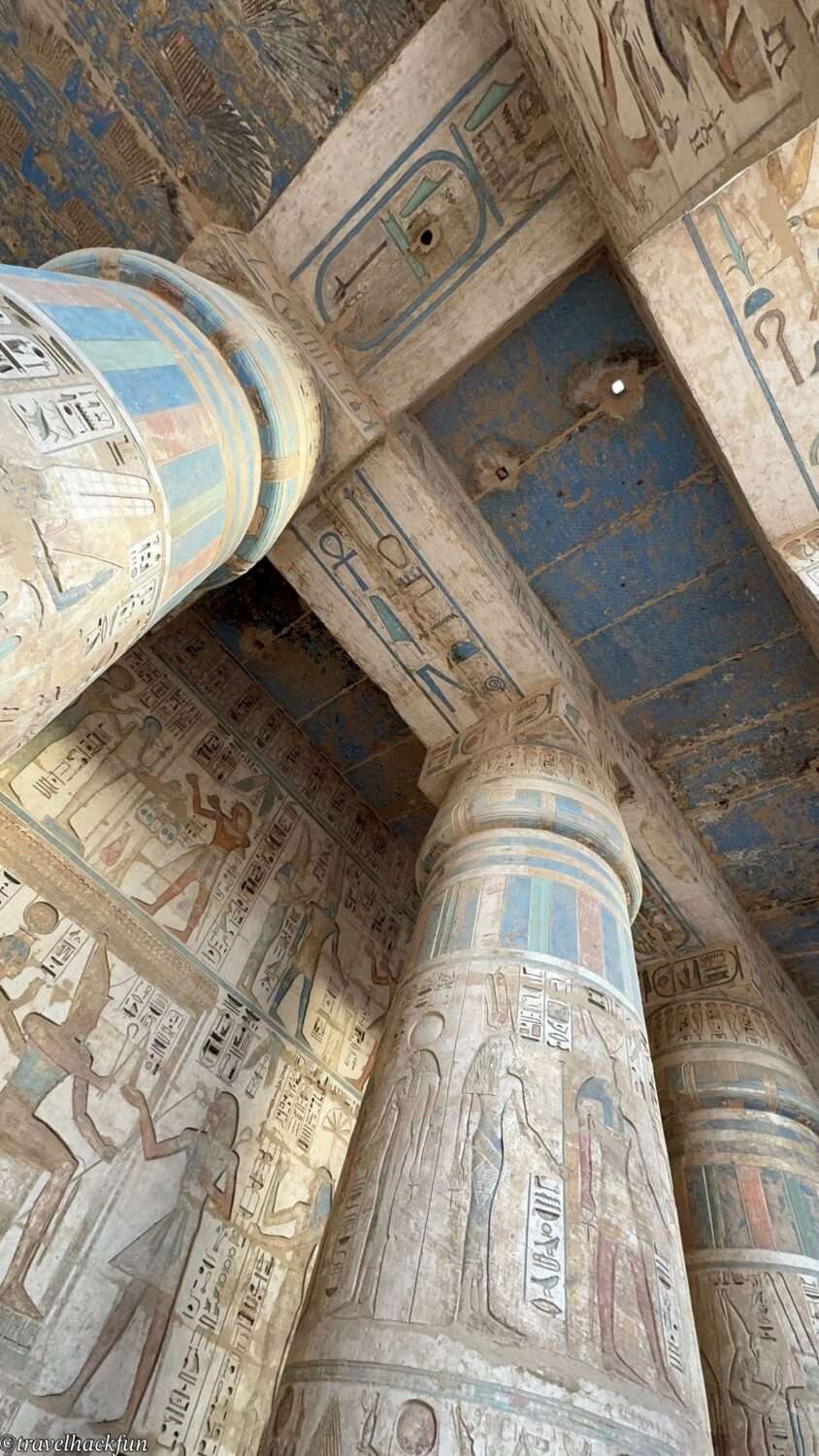



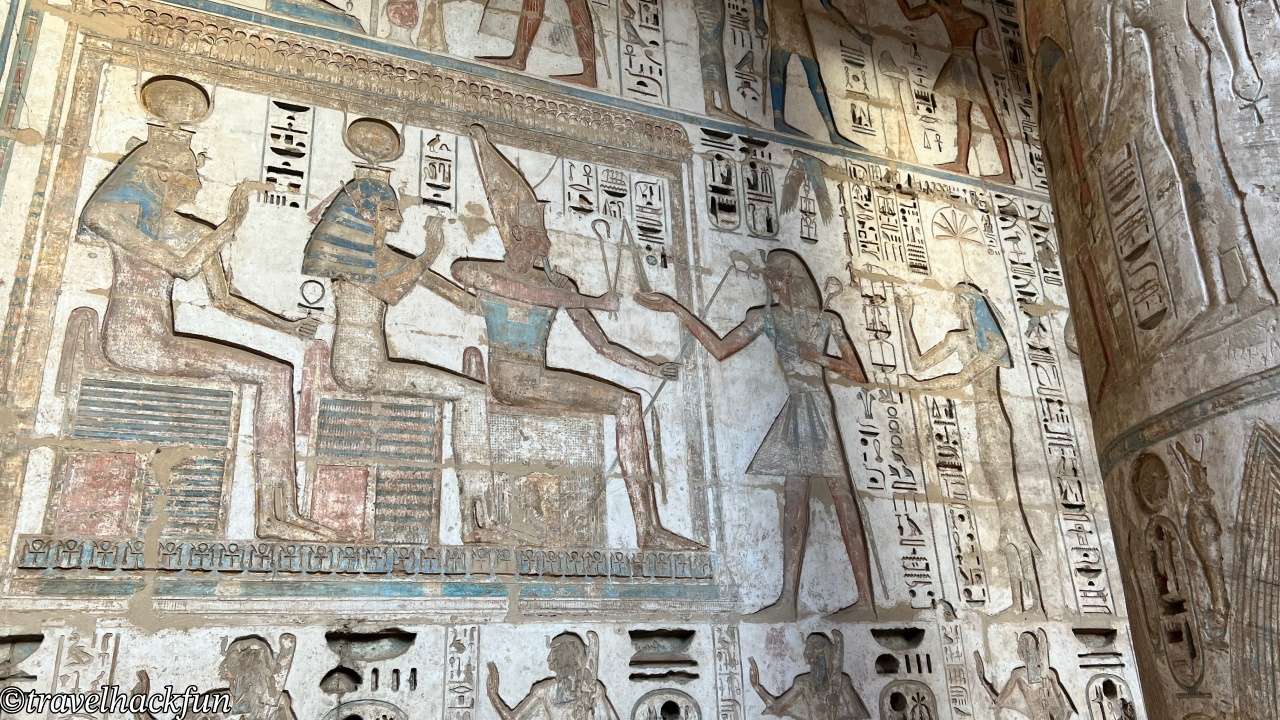
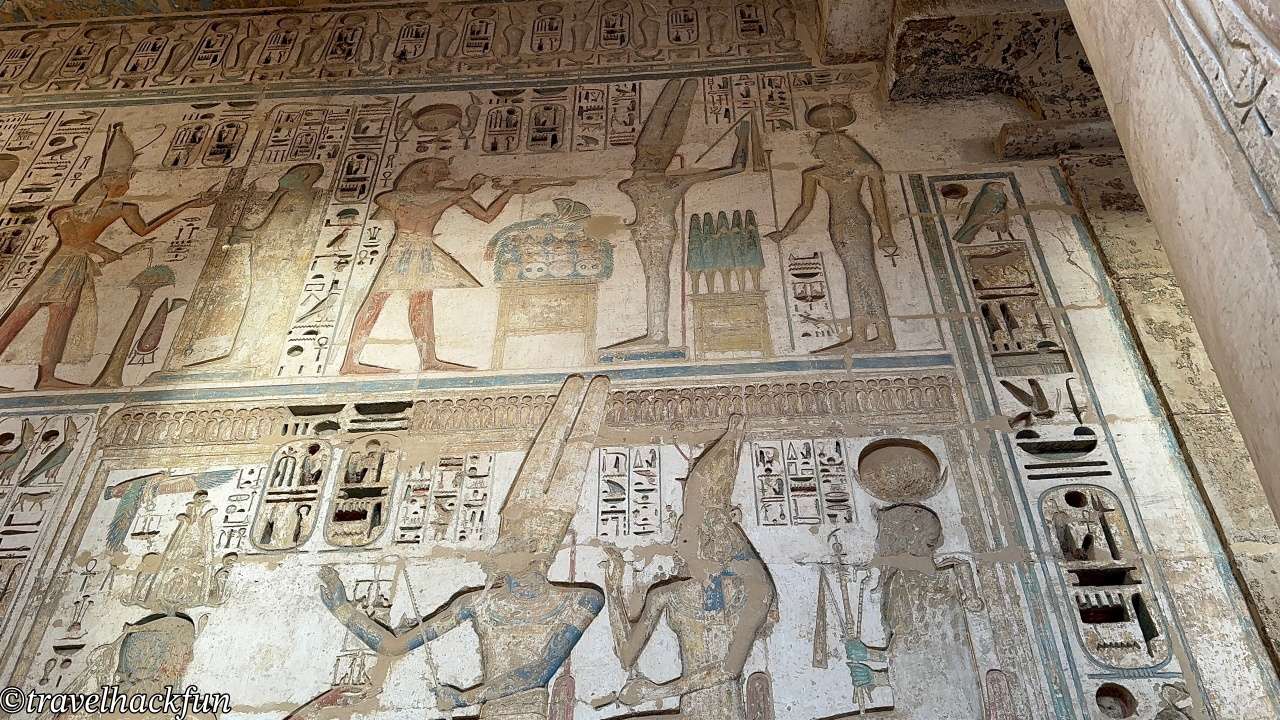
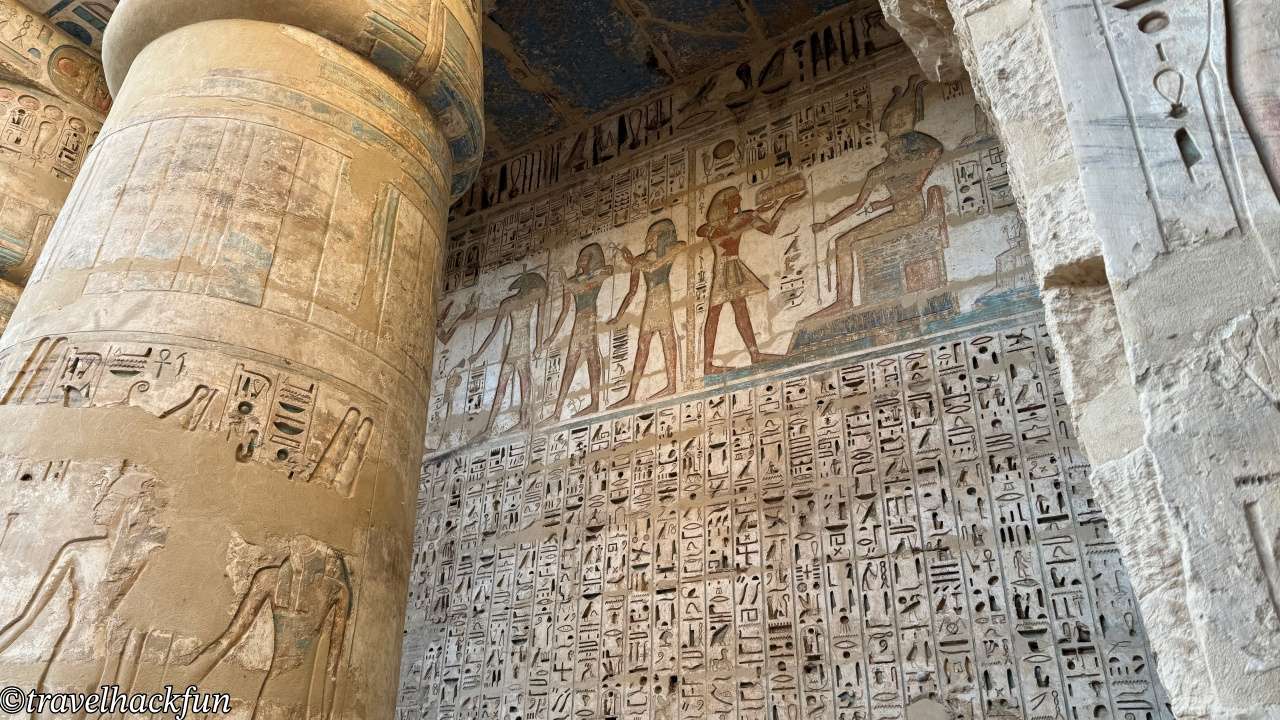
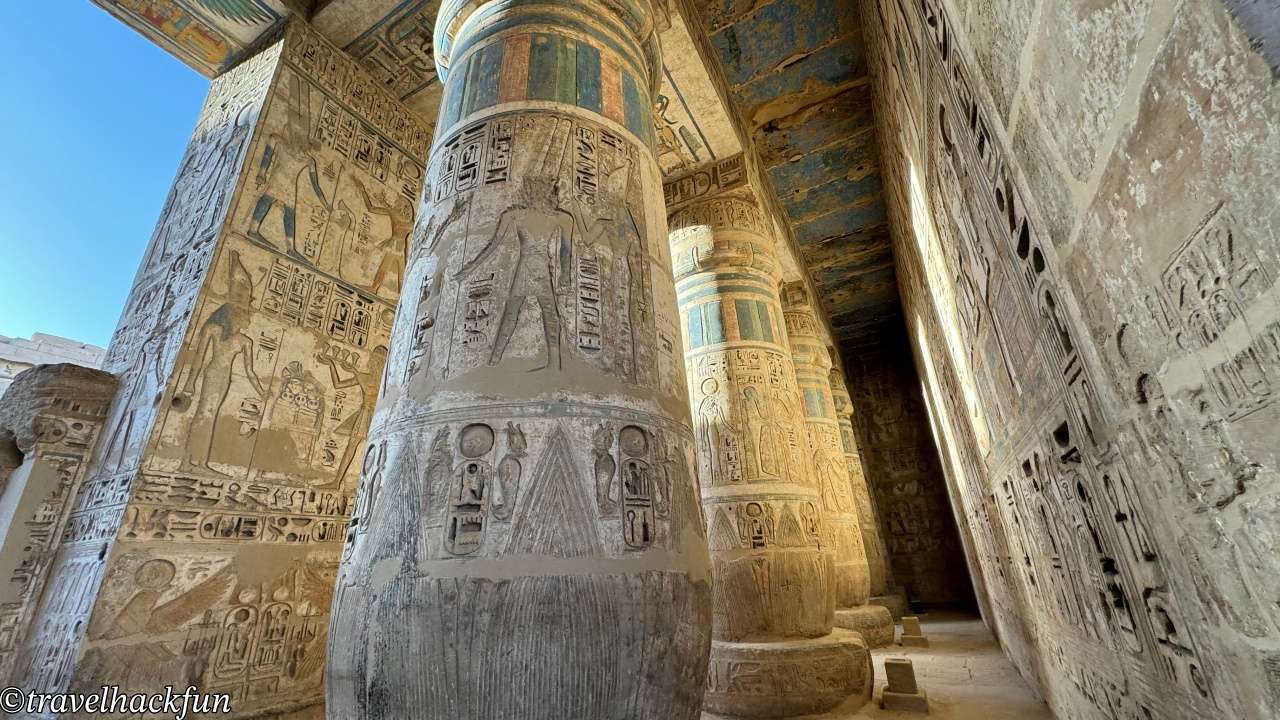
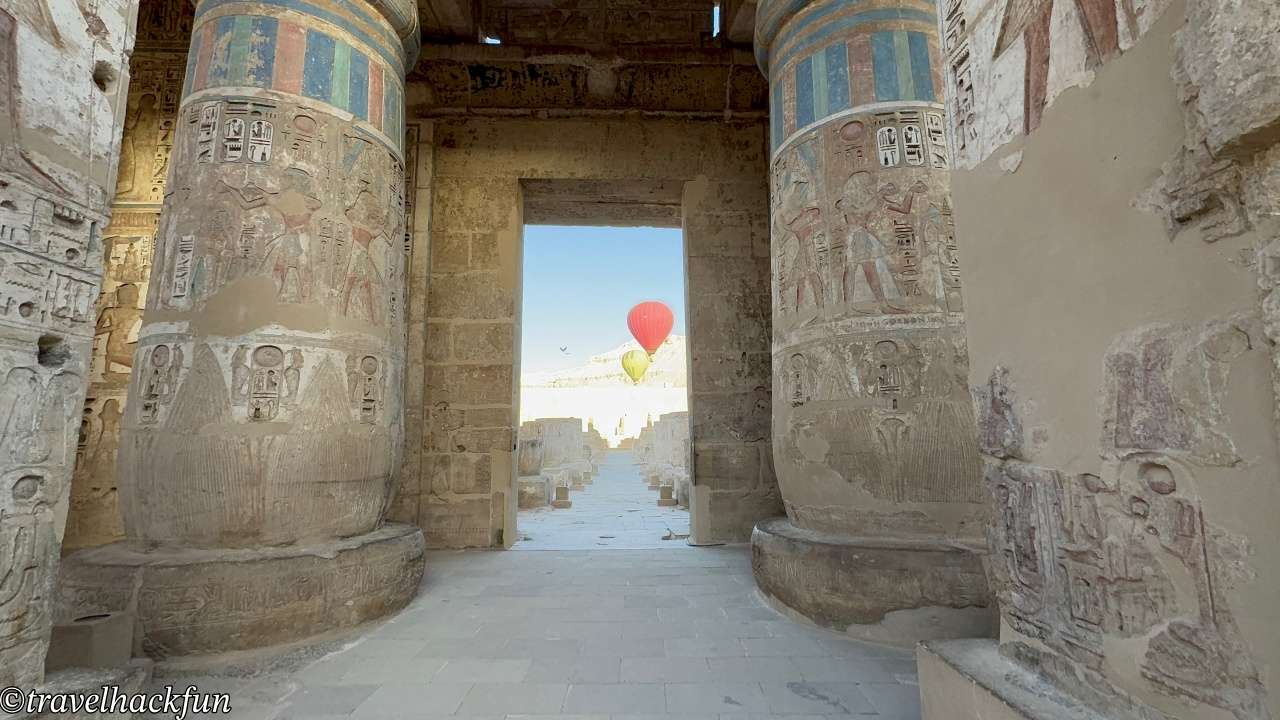
Hypostyle Hall & Sanctuary
Behind the colonnade lies the original Hypostyle Hall, which was once covered by a roof. However, like many other temples, Medinet Habu's upper structures were largely dismantled over time, with only the lower portions remaining intact. The precise cut marks on the stone suggest that the missing materials were likely repurposed by later builders.
As a bonus, if you visit early in the morning, you might catch hot air balloons floating above the site, creating a stunning view from the ground and adding to the magical atmosphere of Medinet Habu.
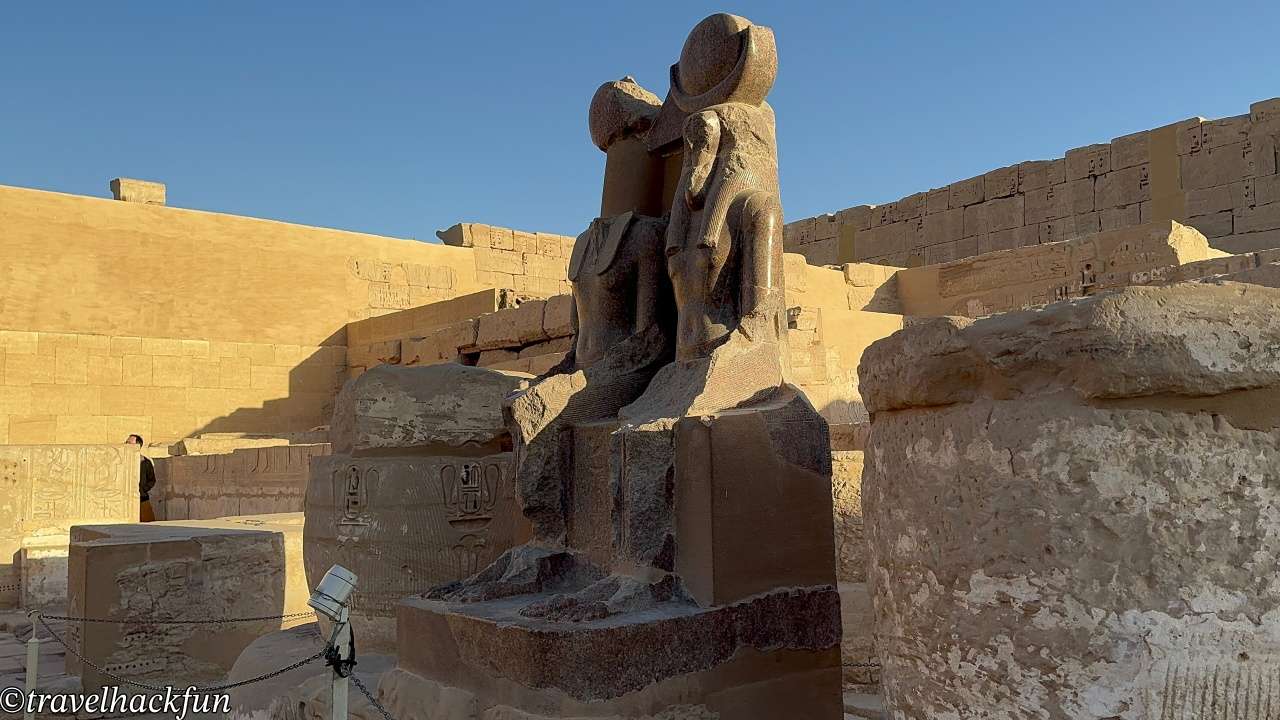
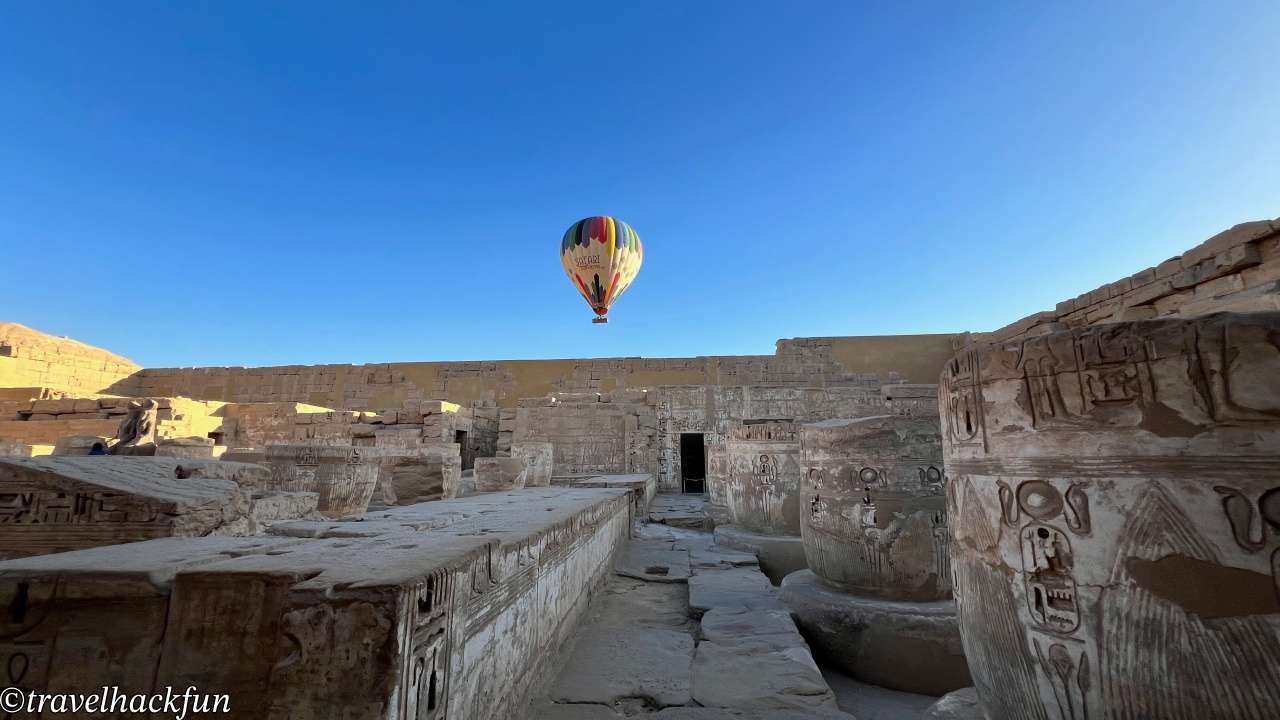



The deeper part of the temple was originally a sacrificial hall dedicated to the god Amun and other important deities, which was restricted to the priests and pharaohs, the religious core of the temple. The walls are carved with star patterns and symbolic symbols, giving it a mystical religious atmosphere.
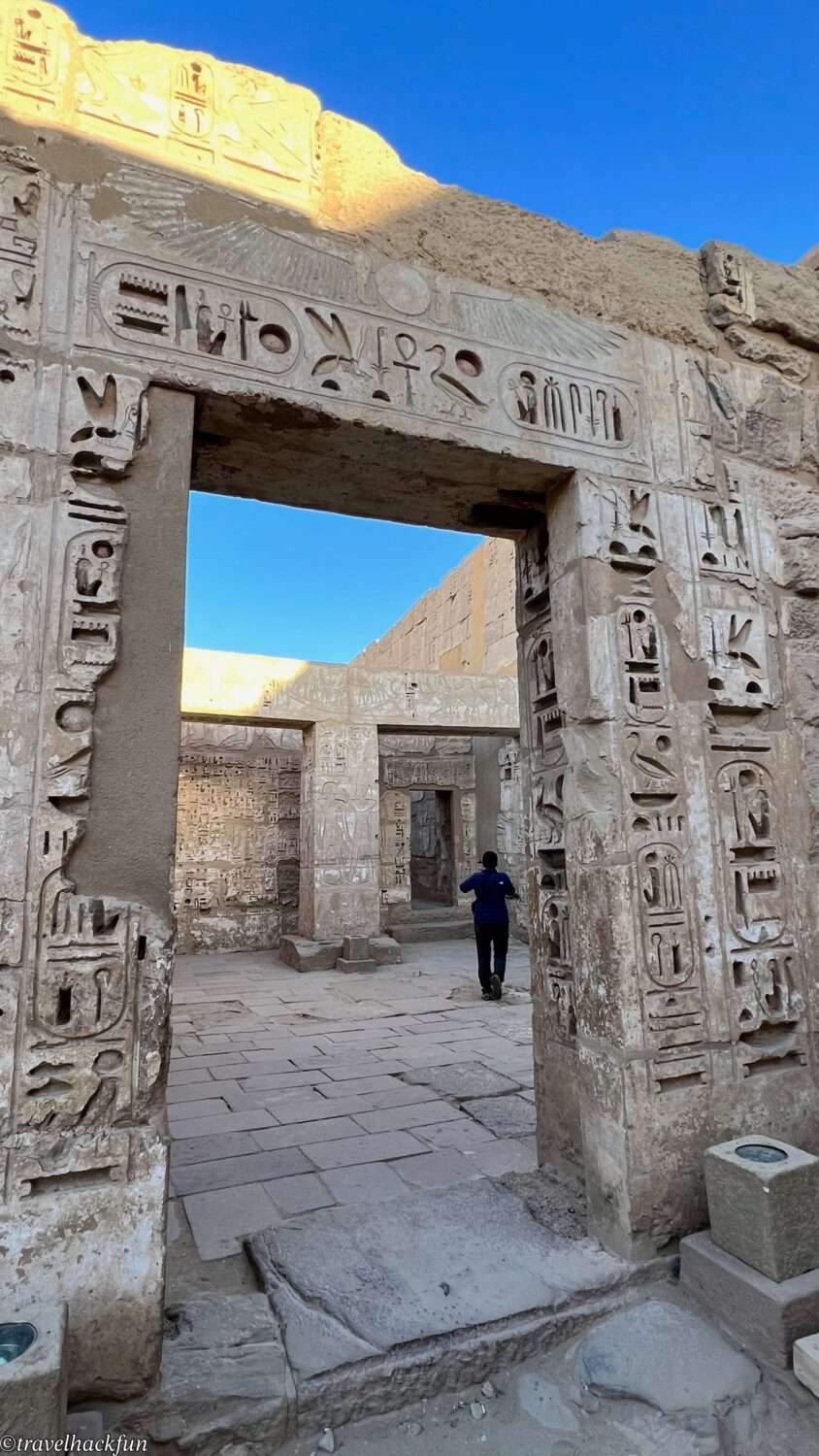


The rooms on either side were once used to store jewelry, musical instruments, valuable vessels, and treasures of gold and silver.


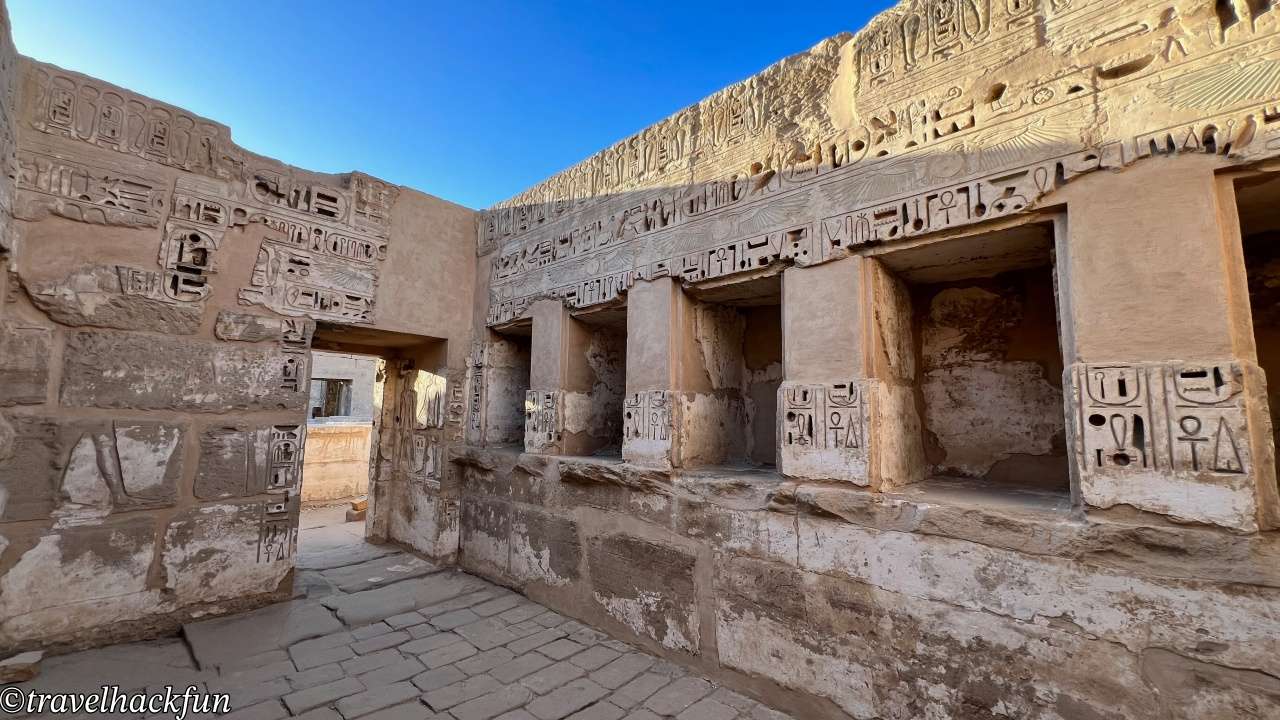
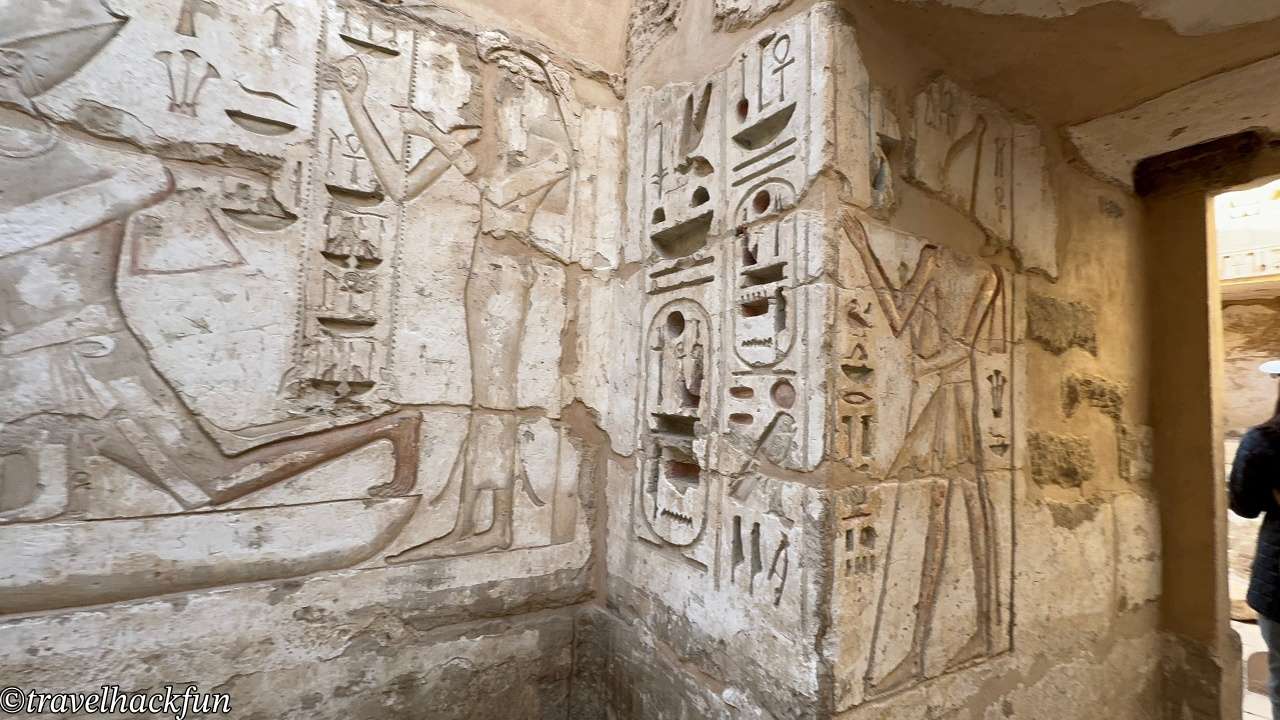
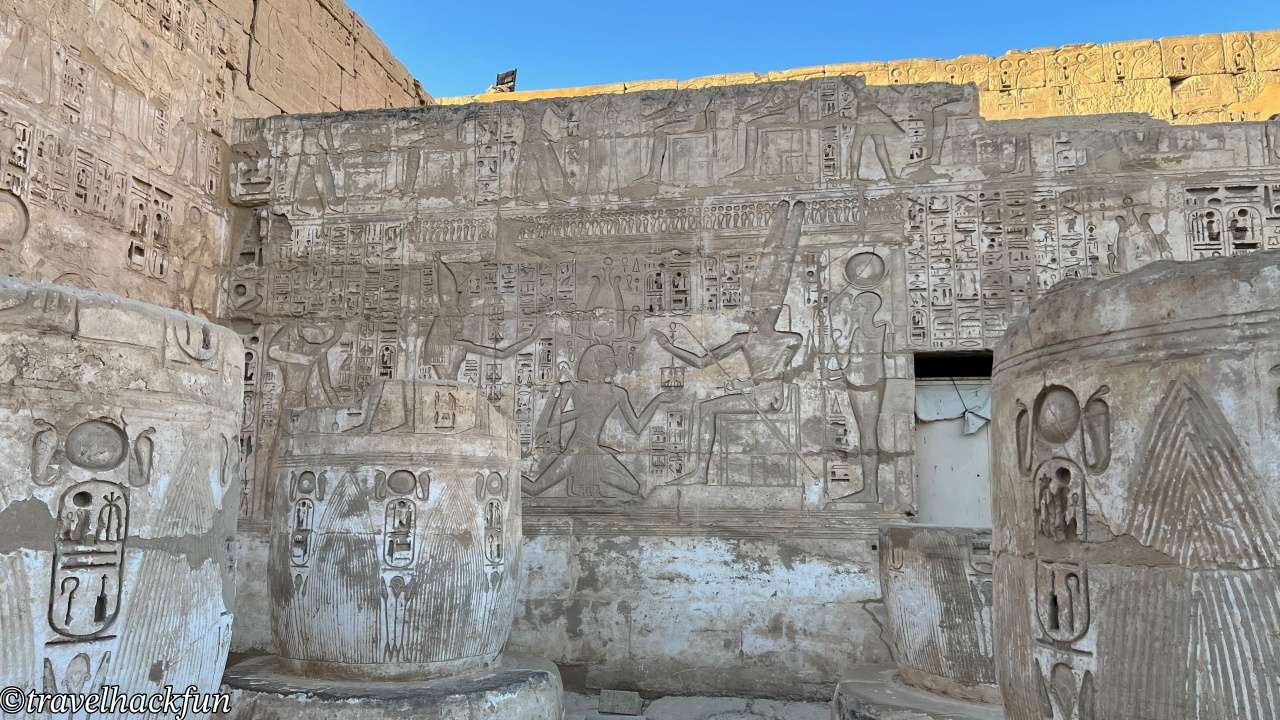
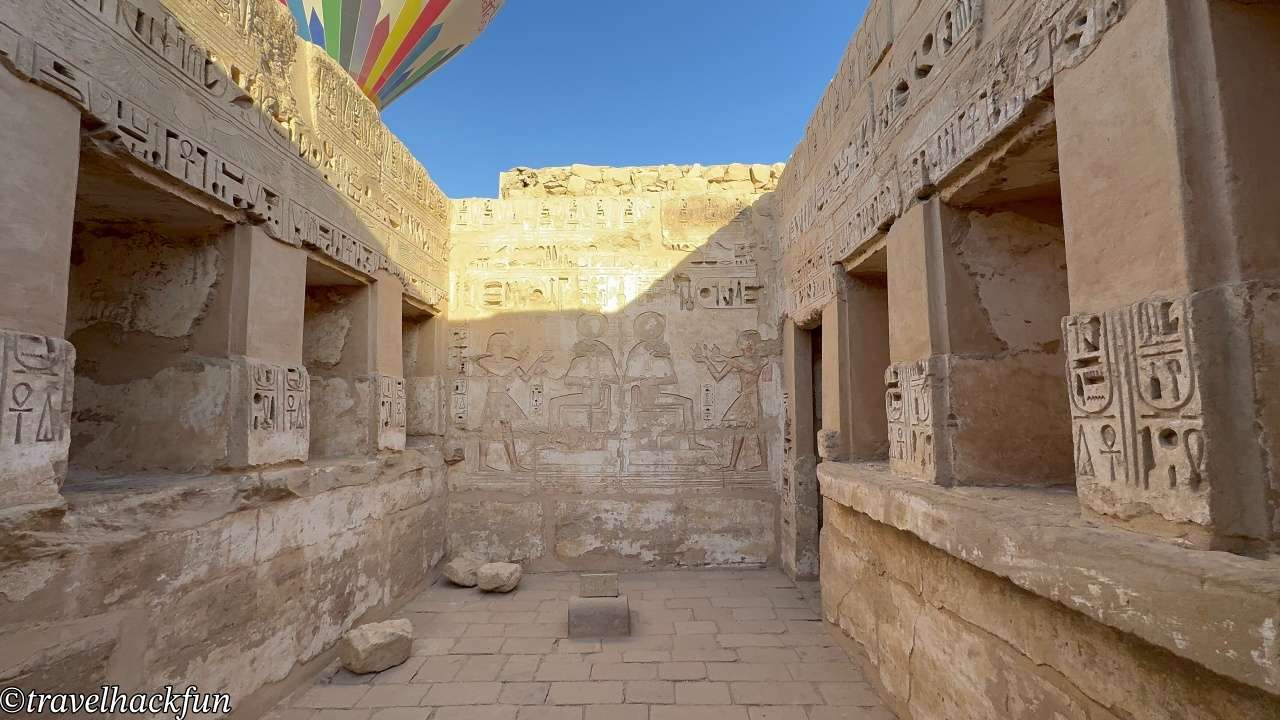
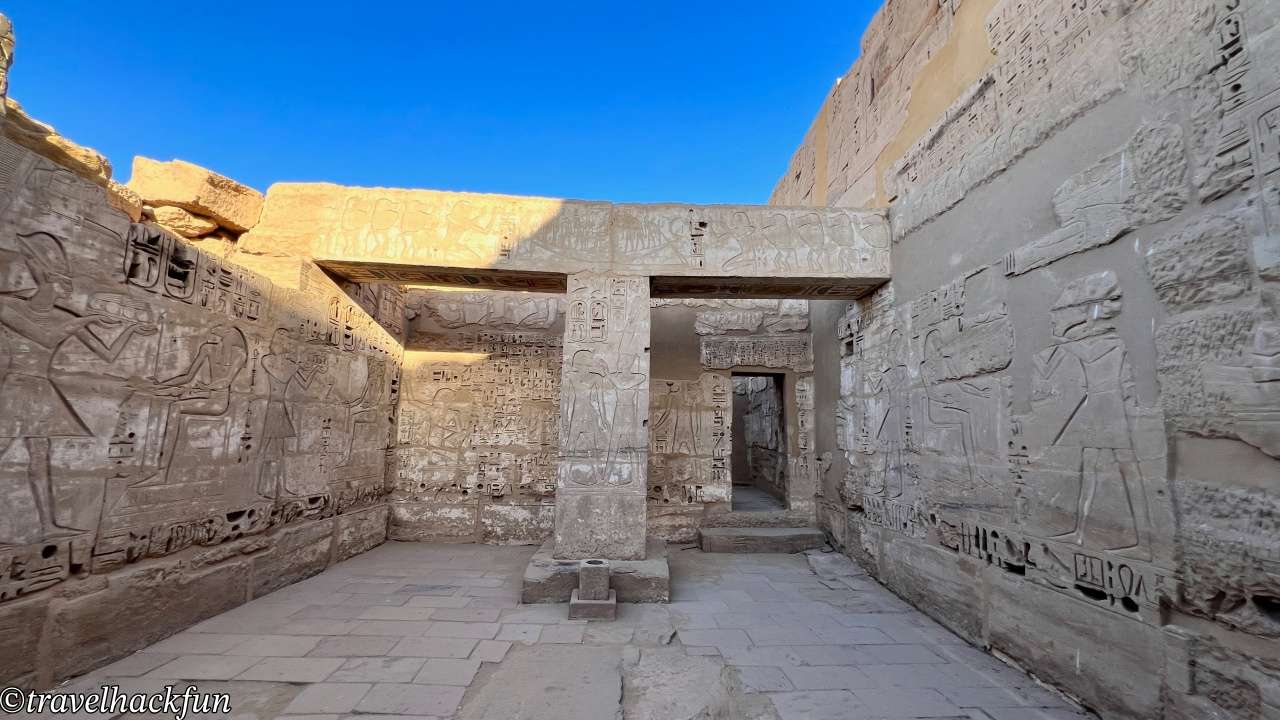
☕ Enjoying my travel notes?
You can Buy me a coffee to support what I do 🙌